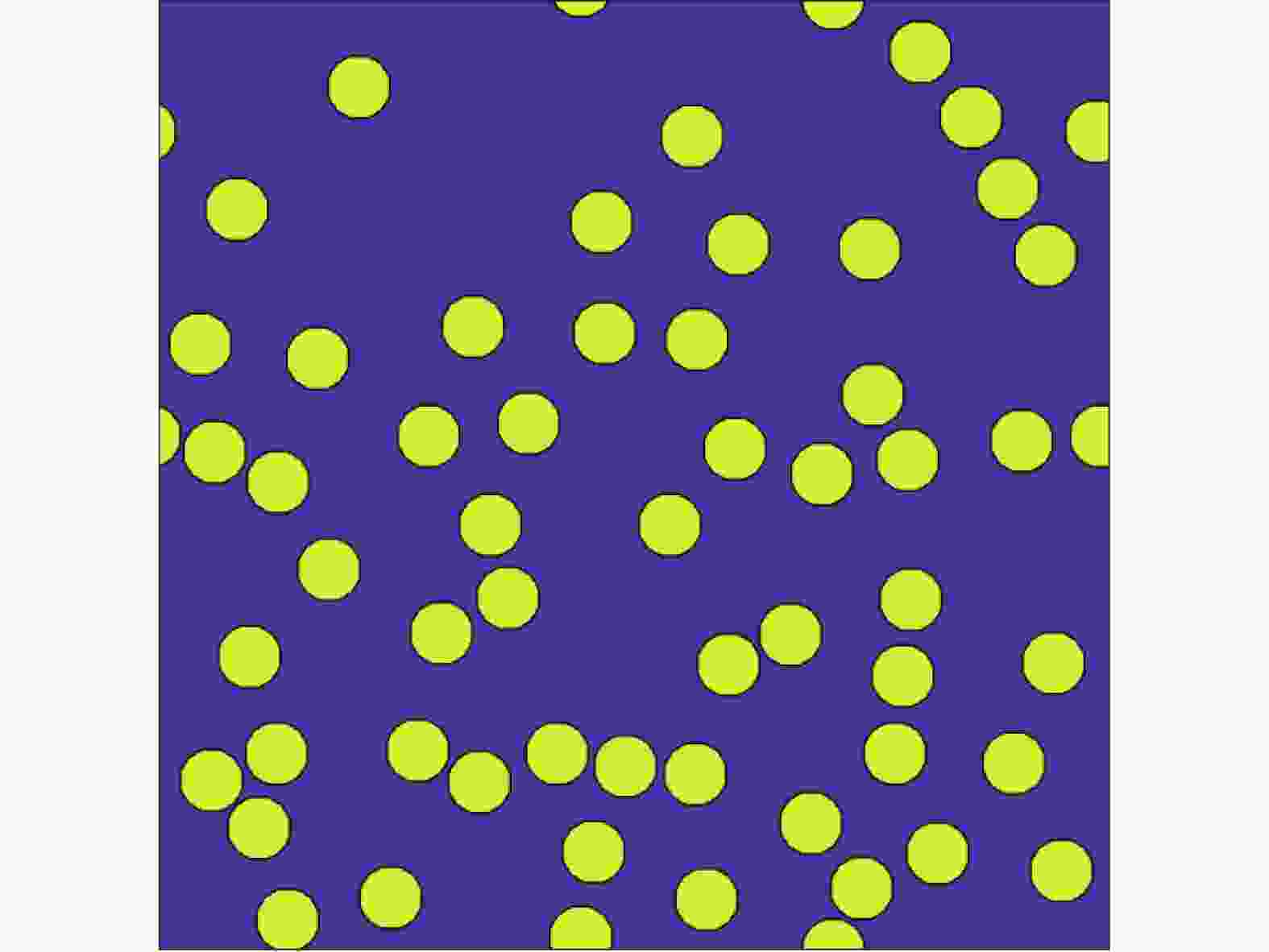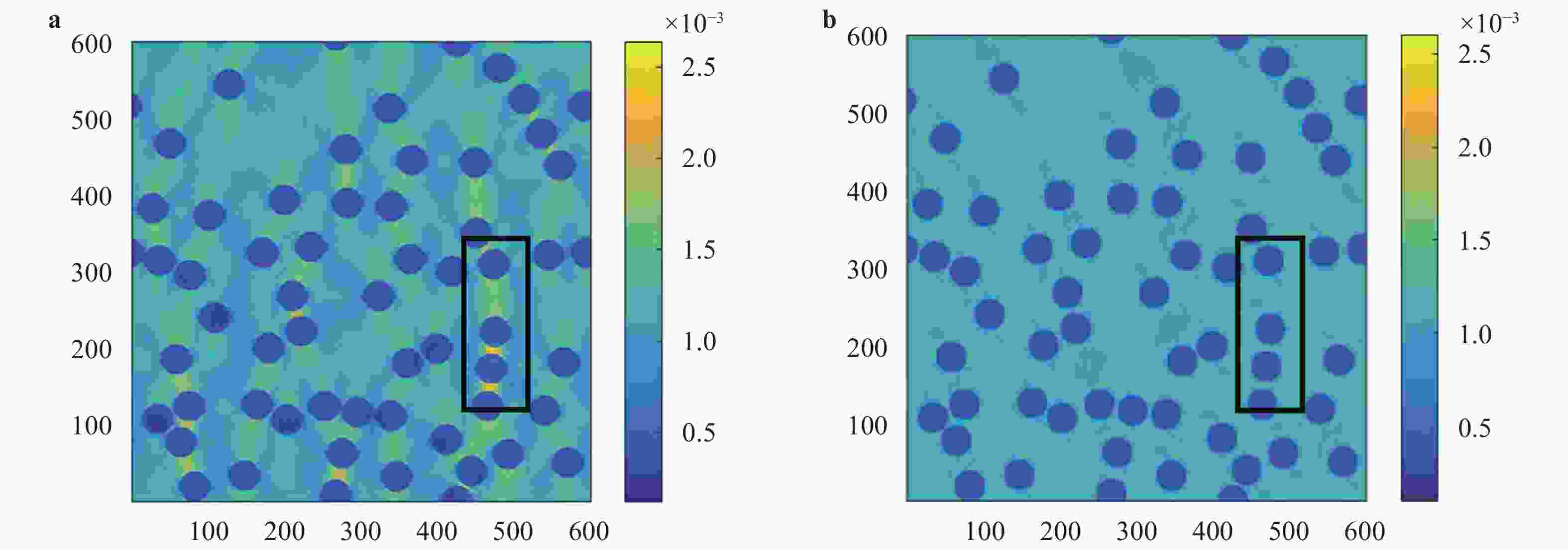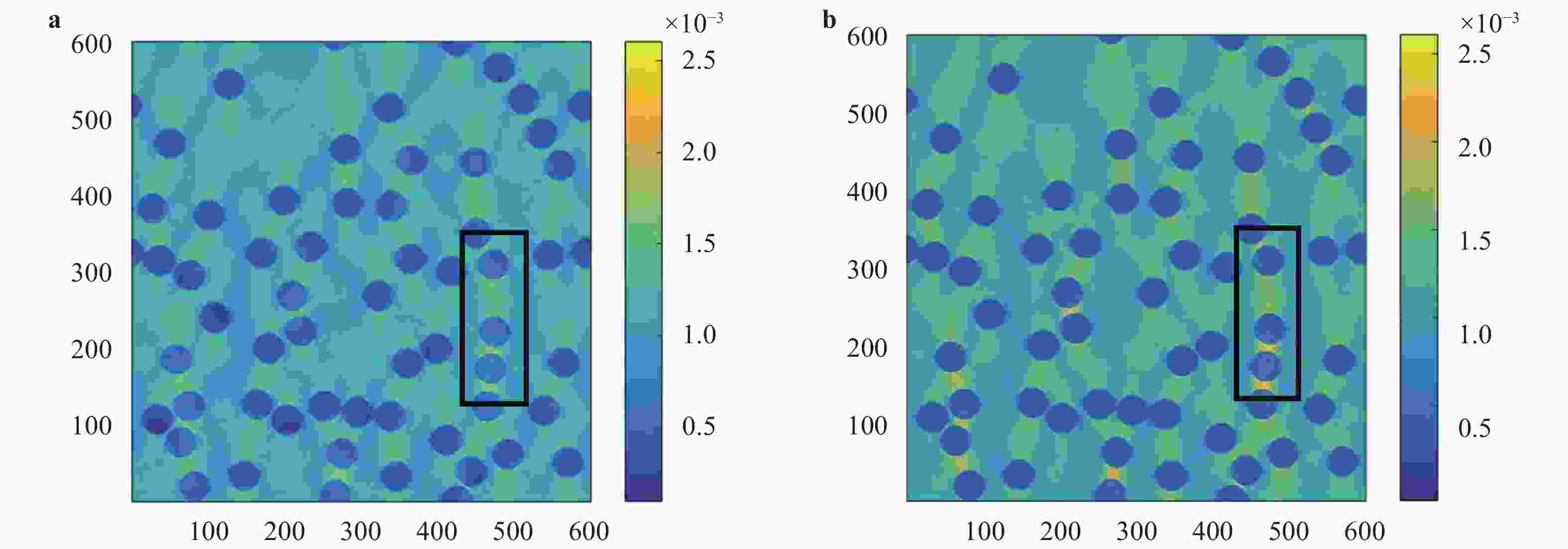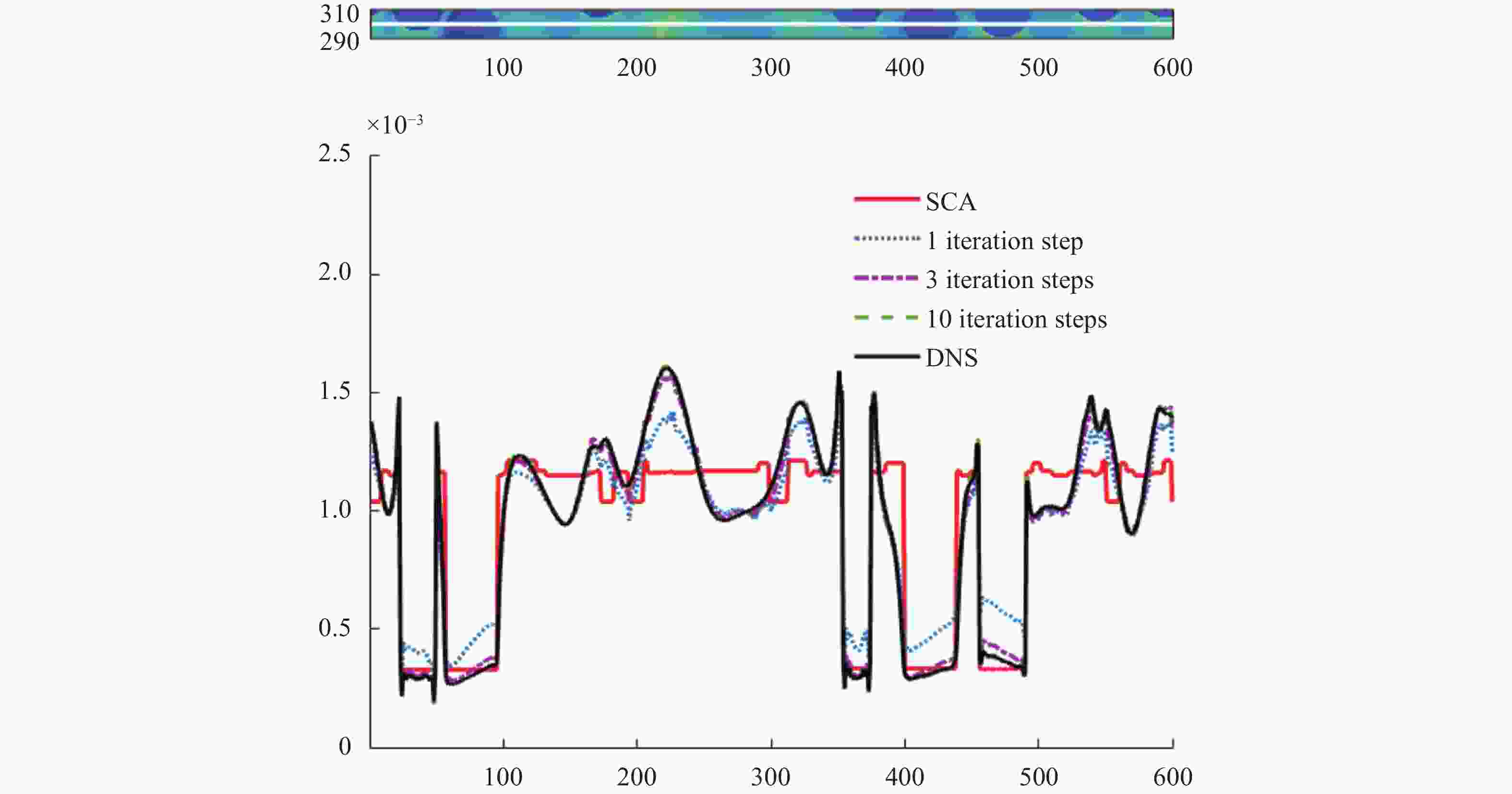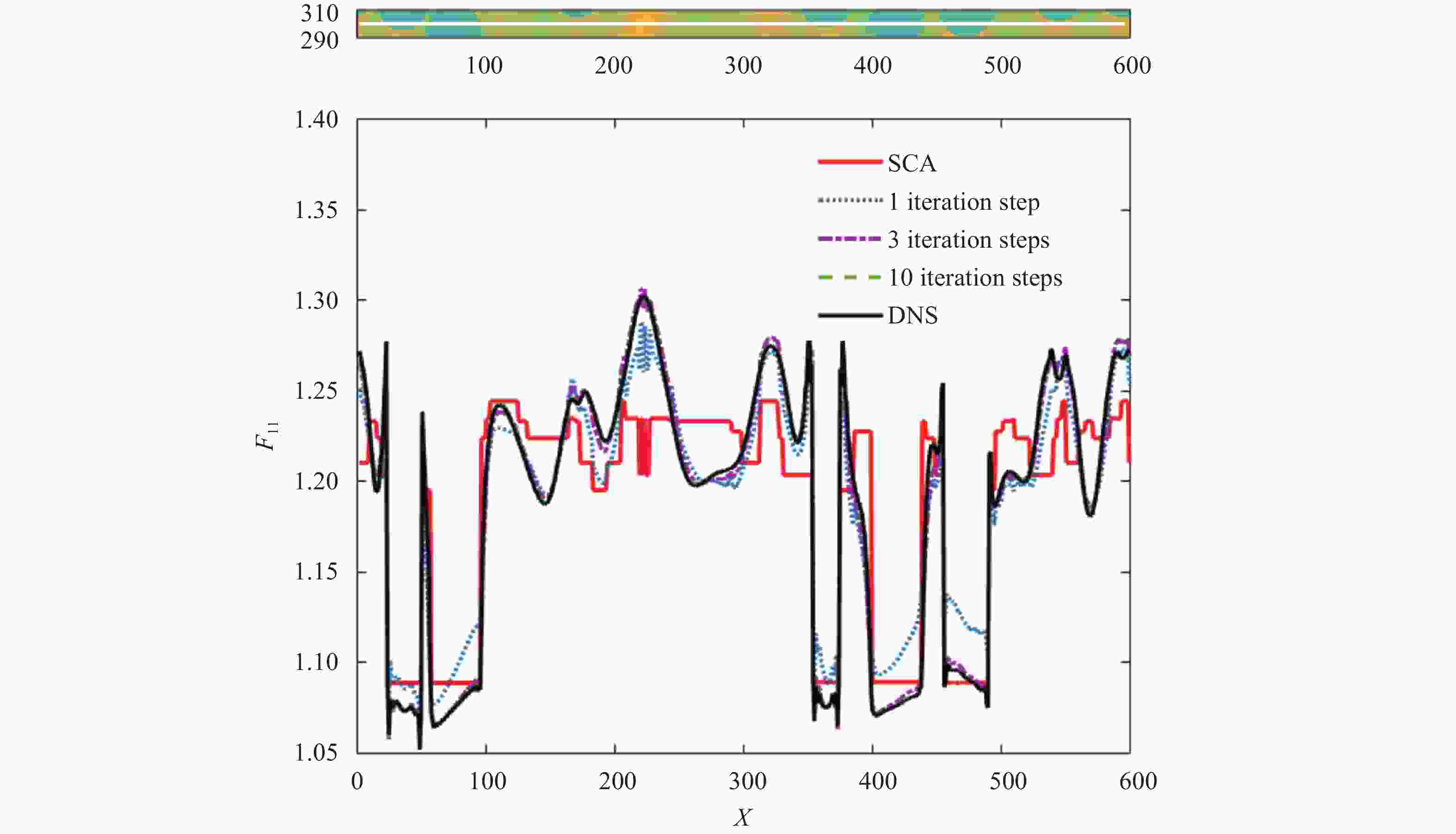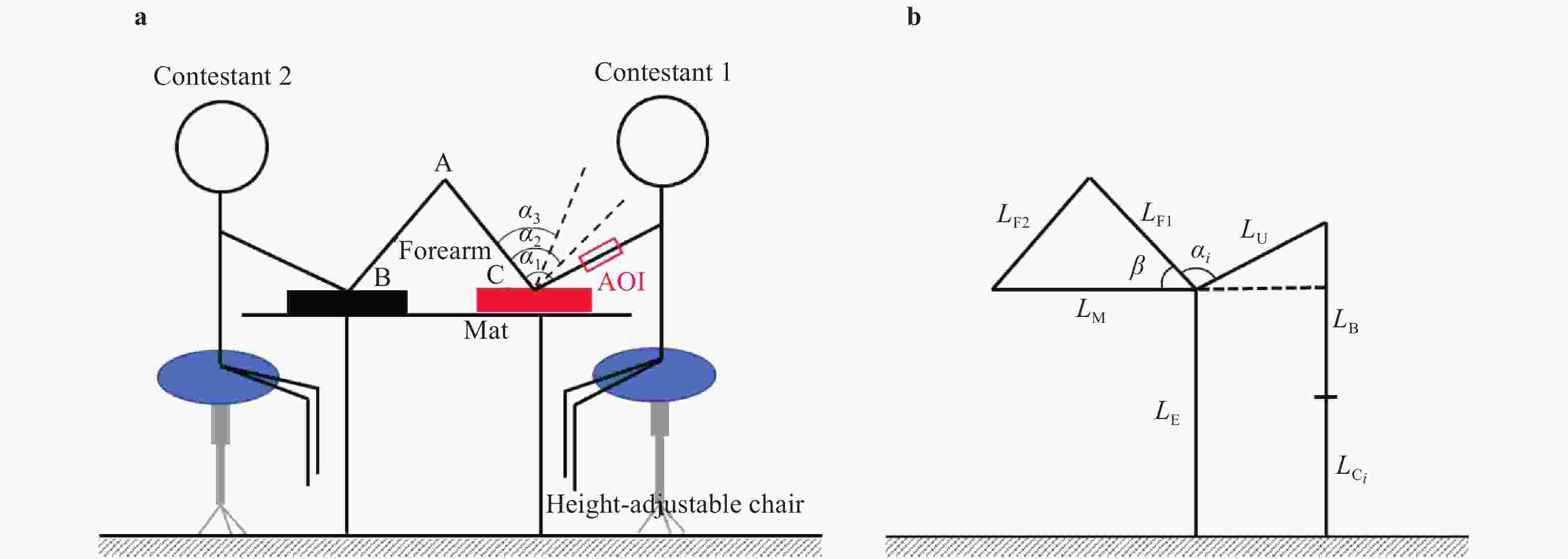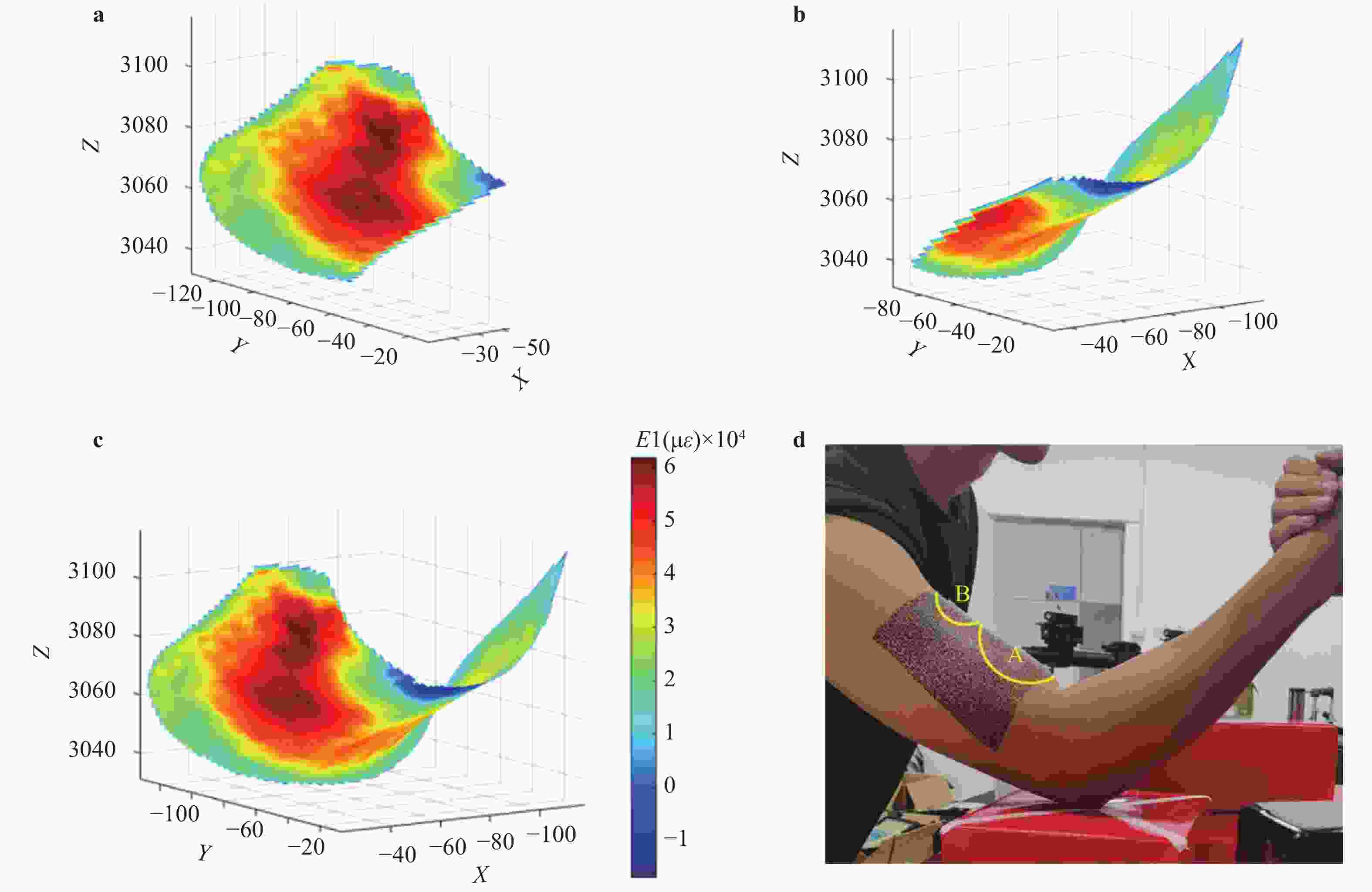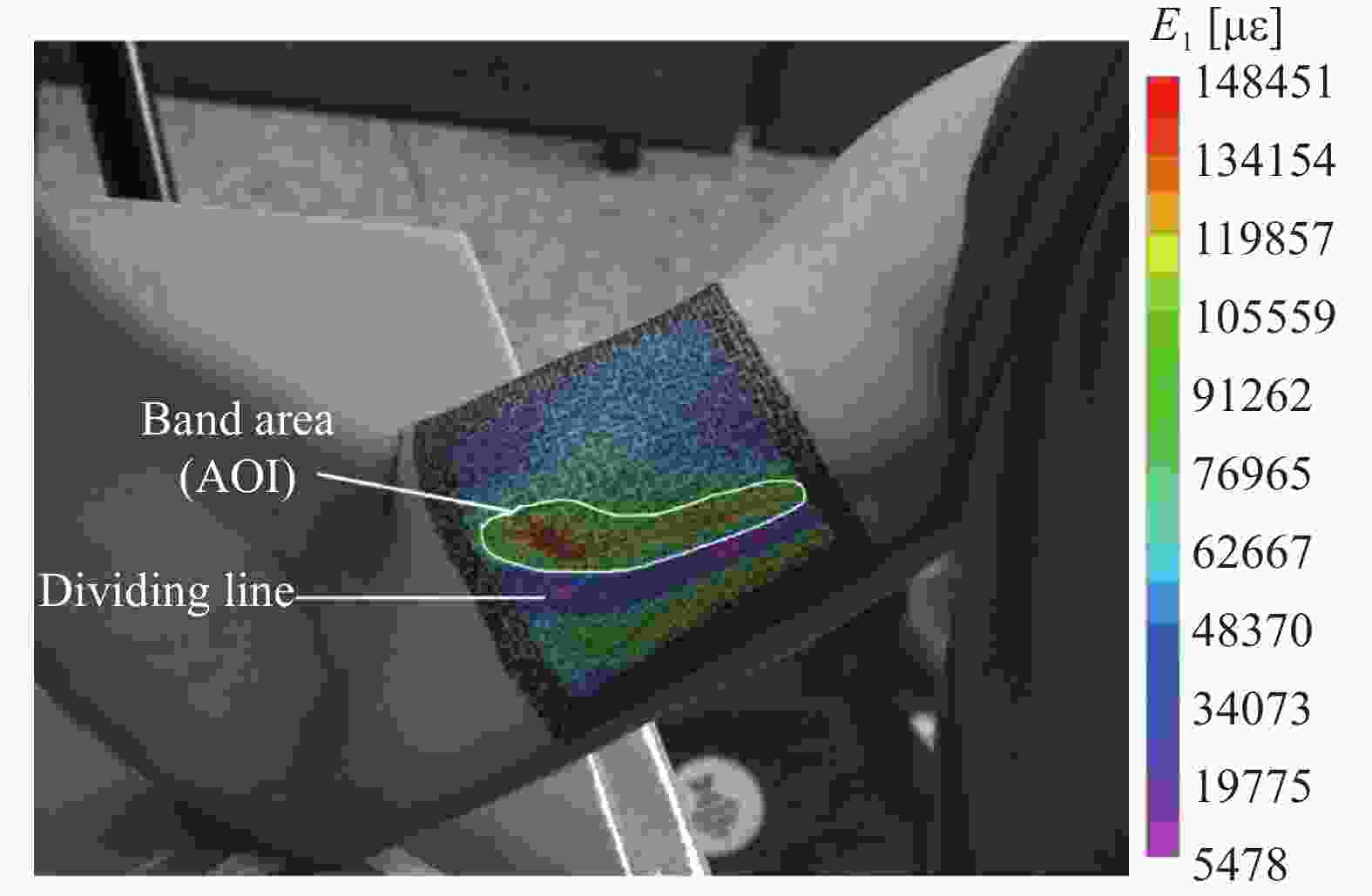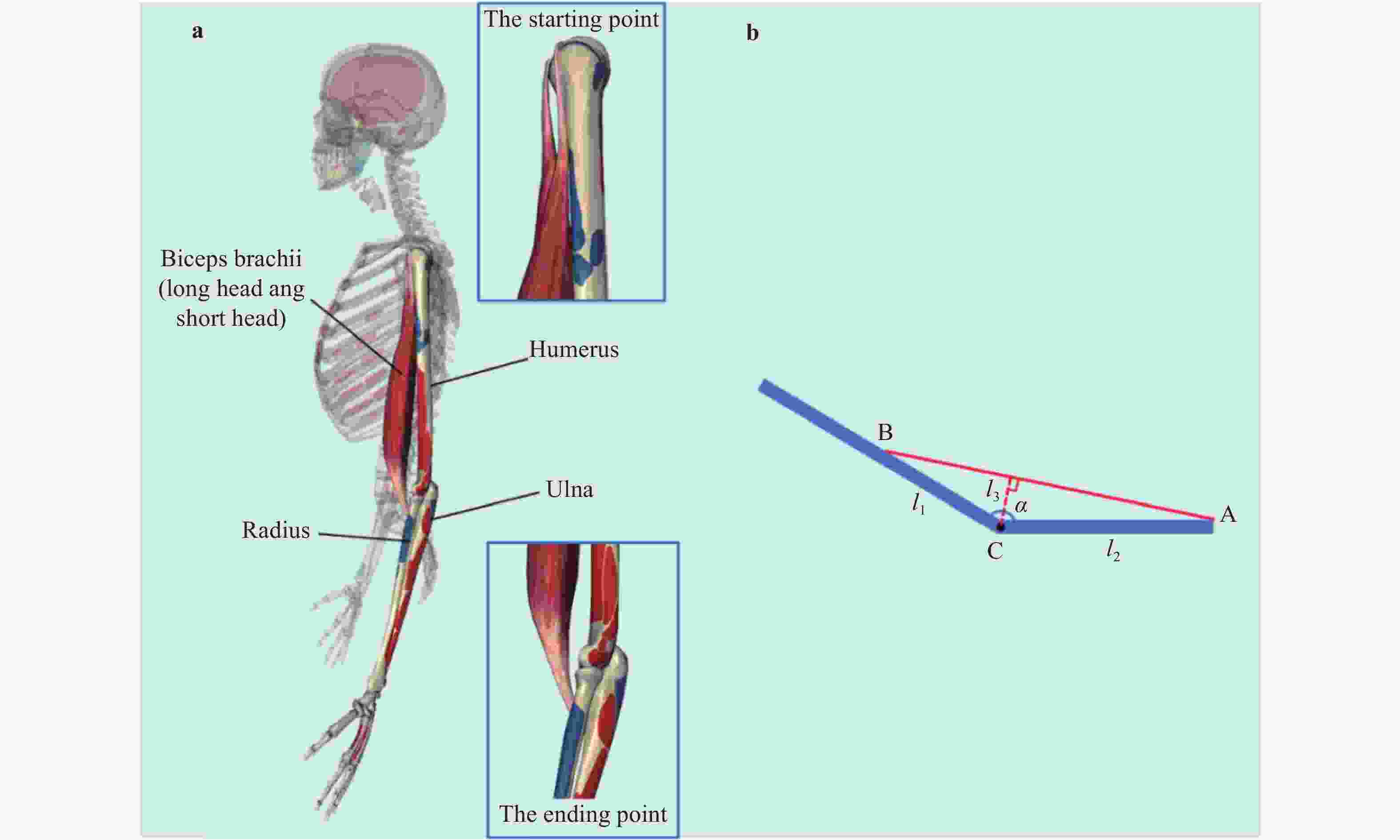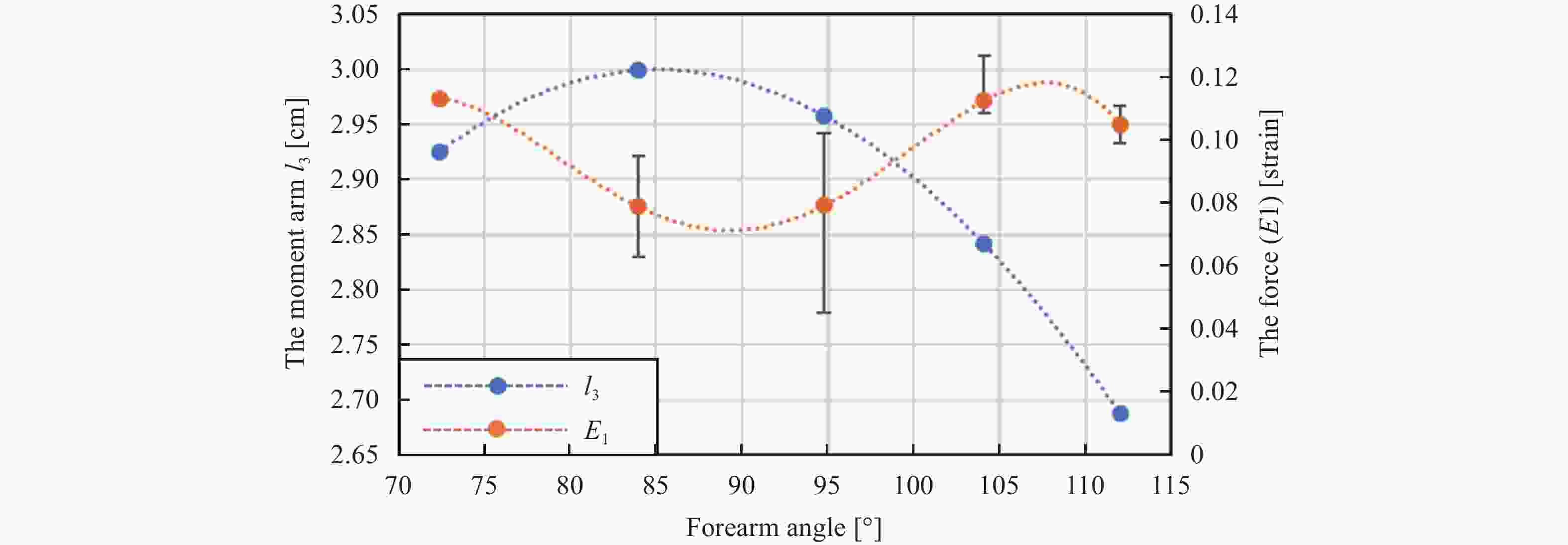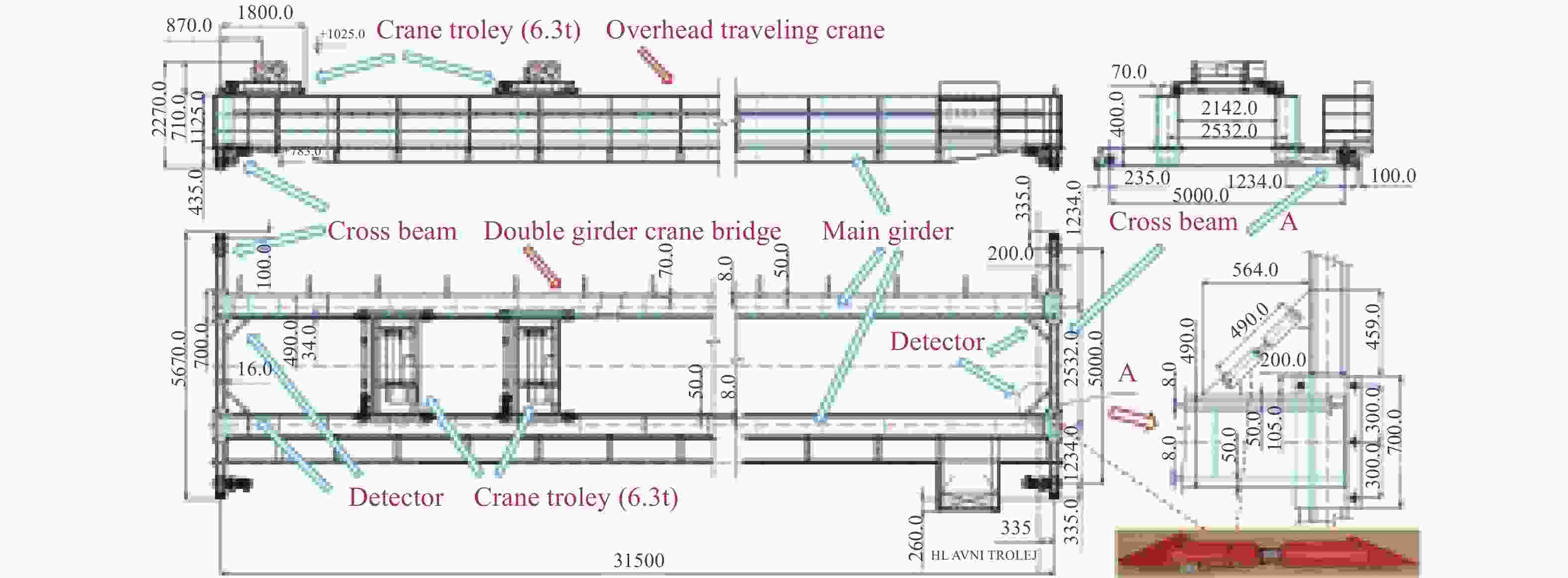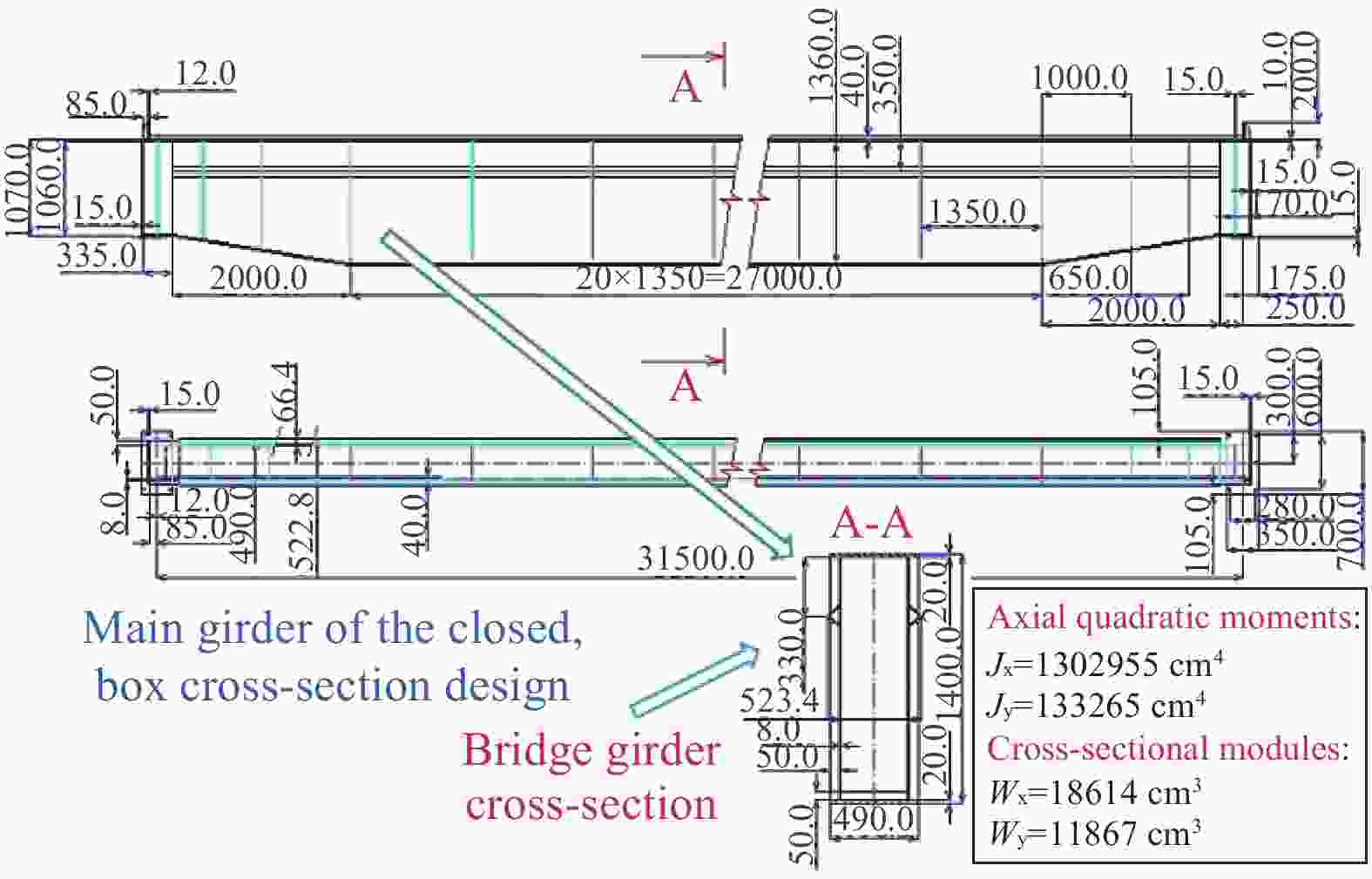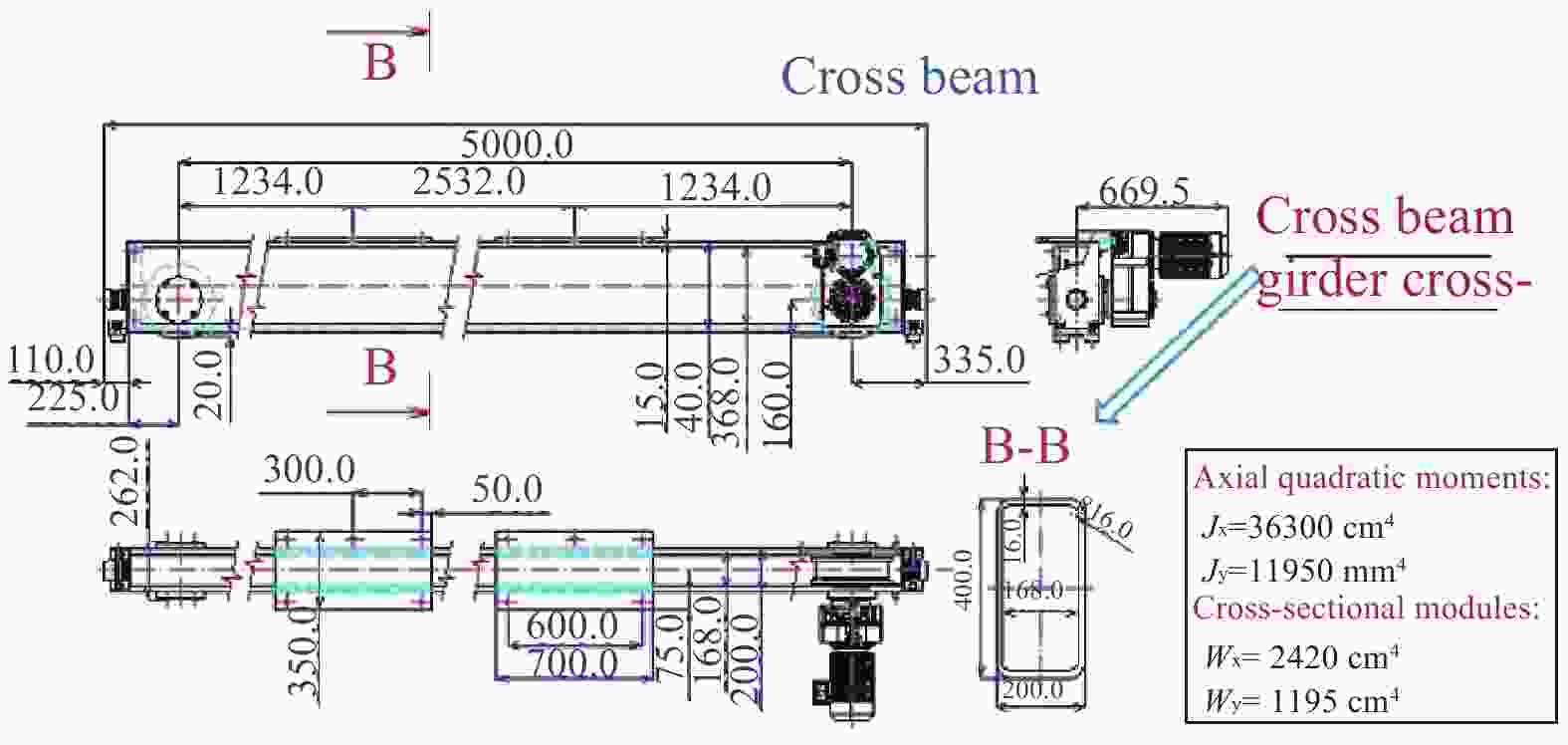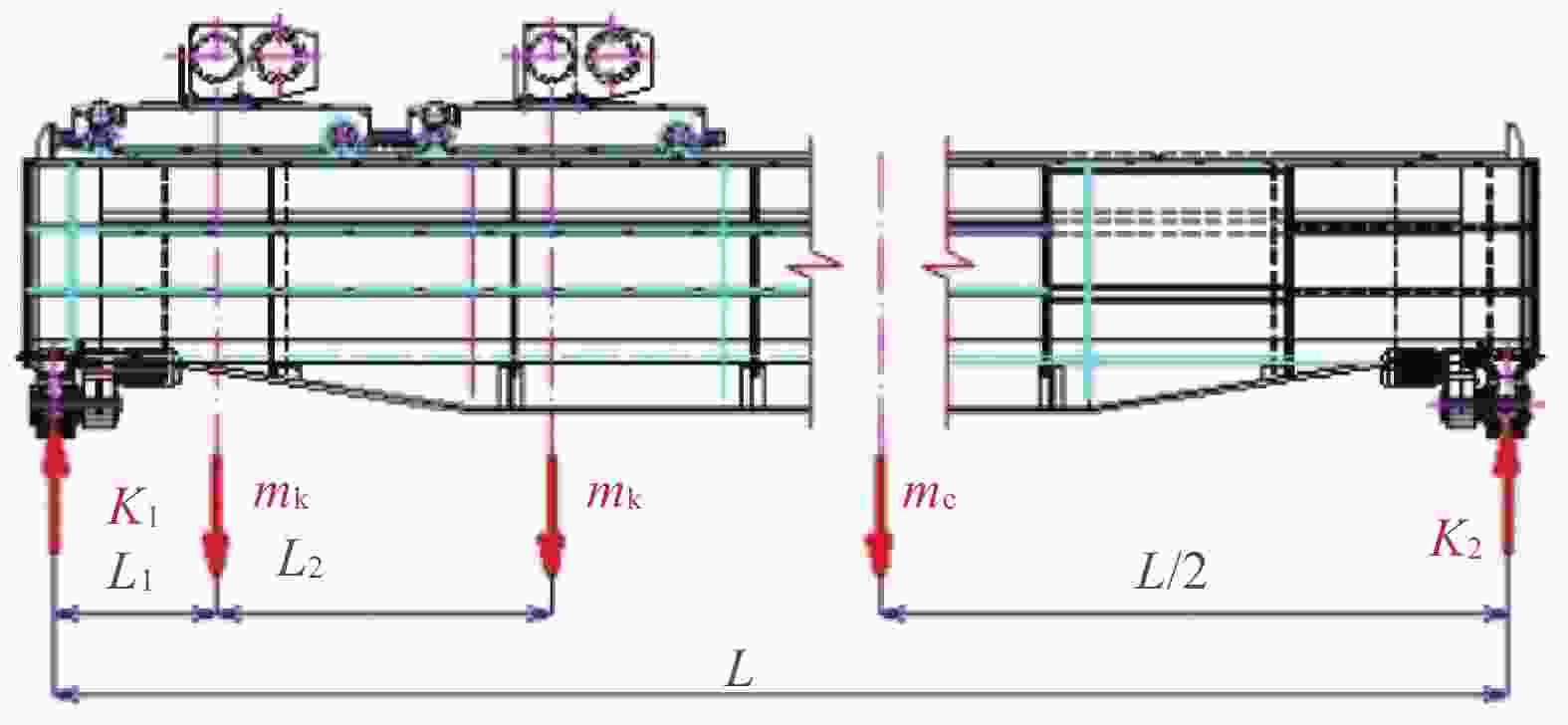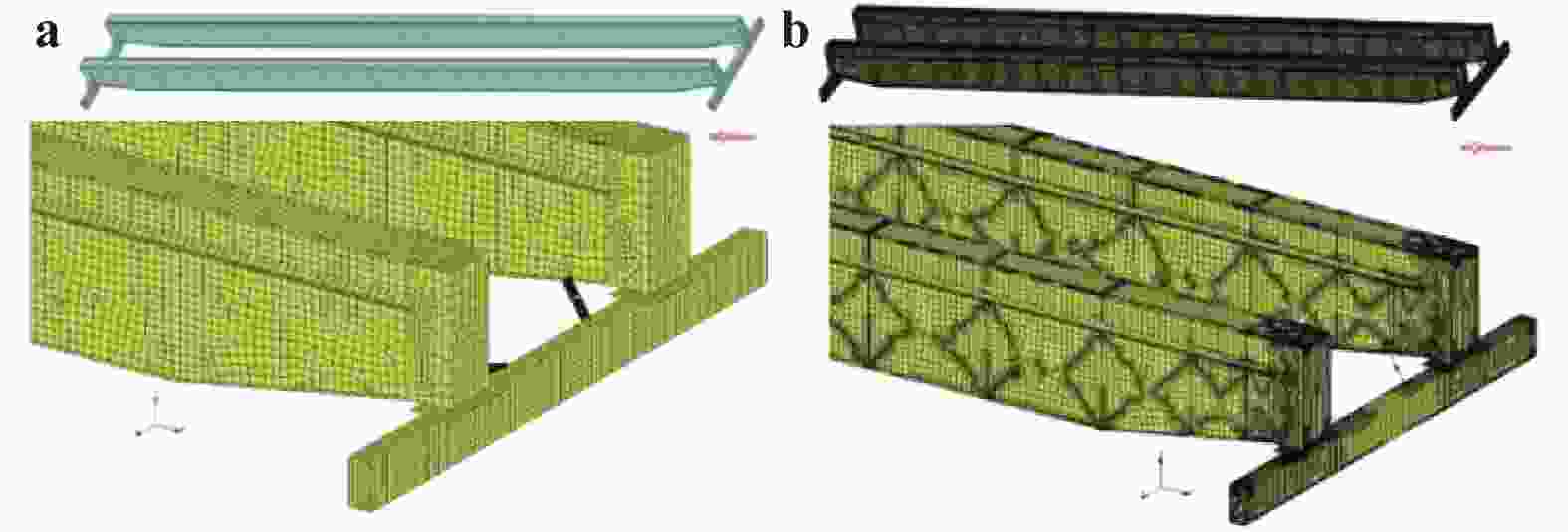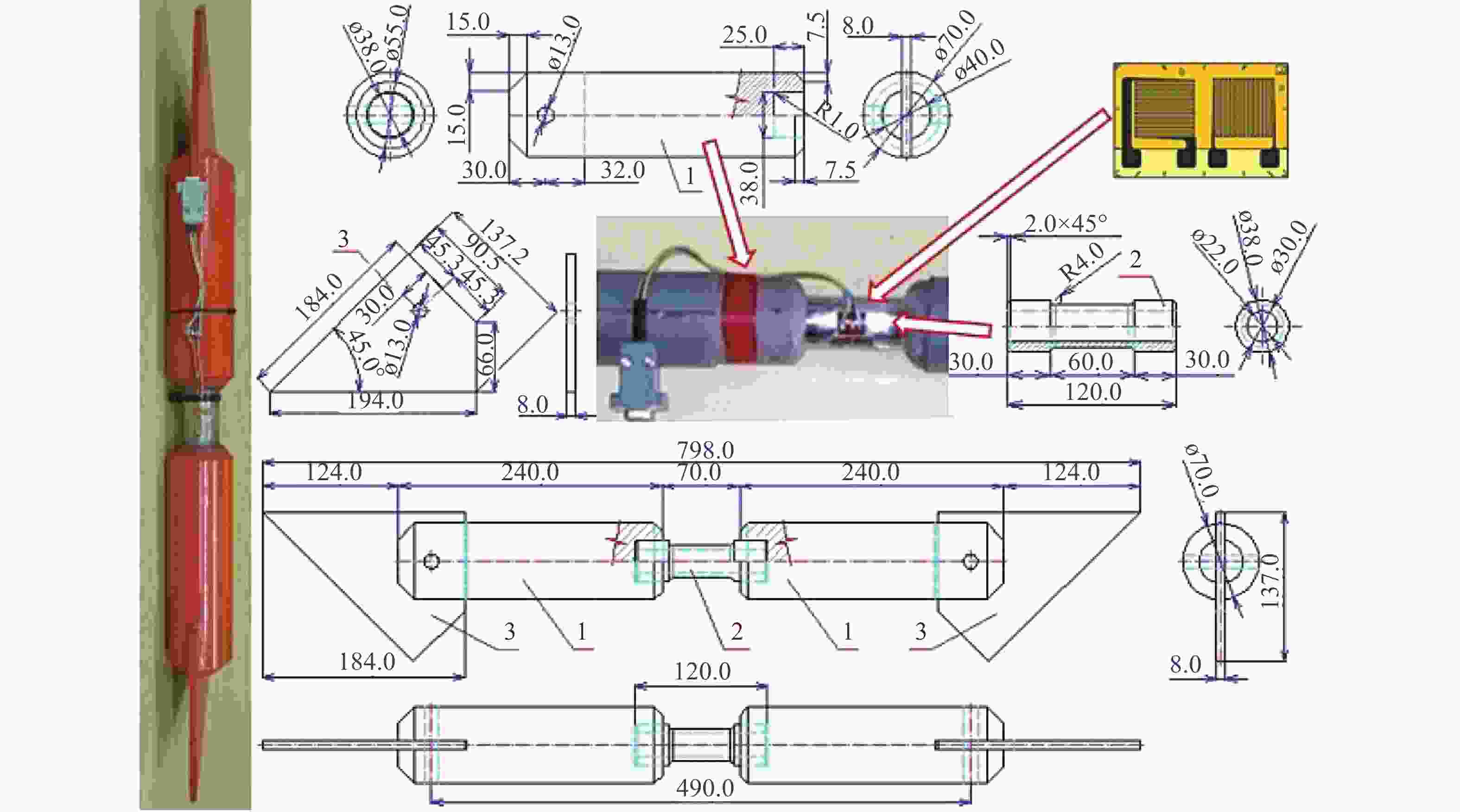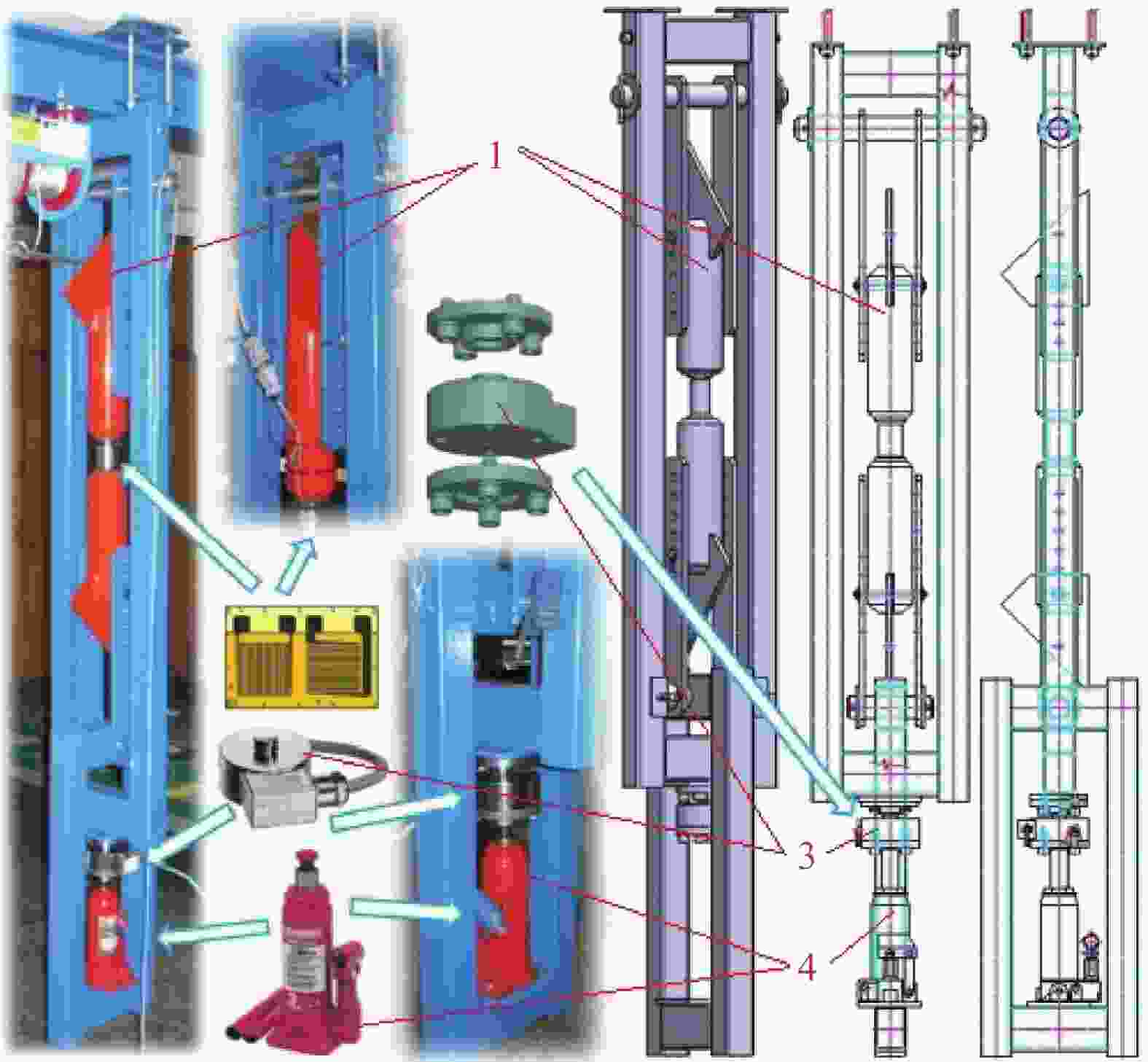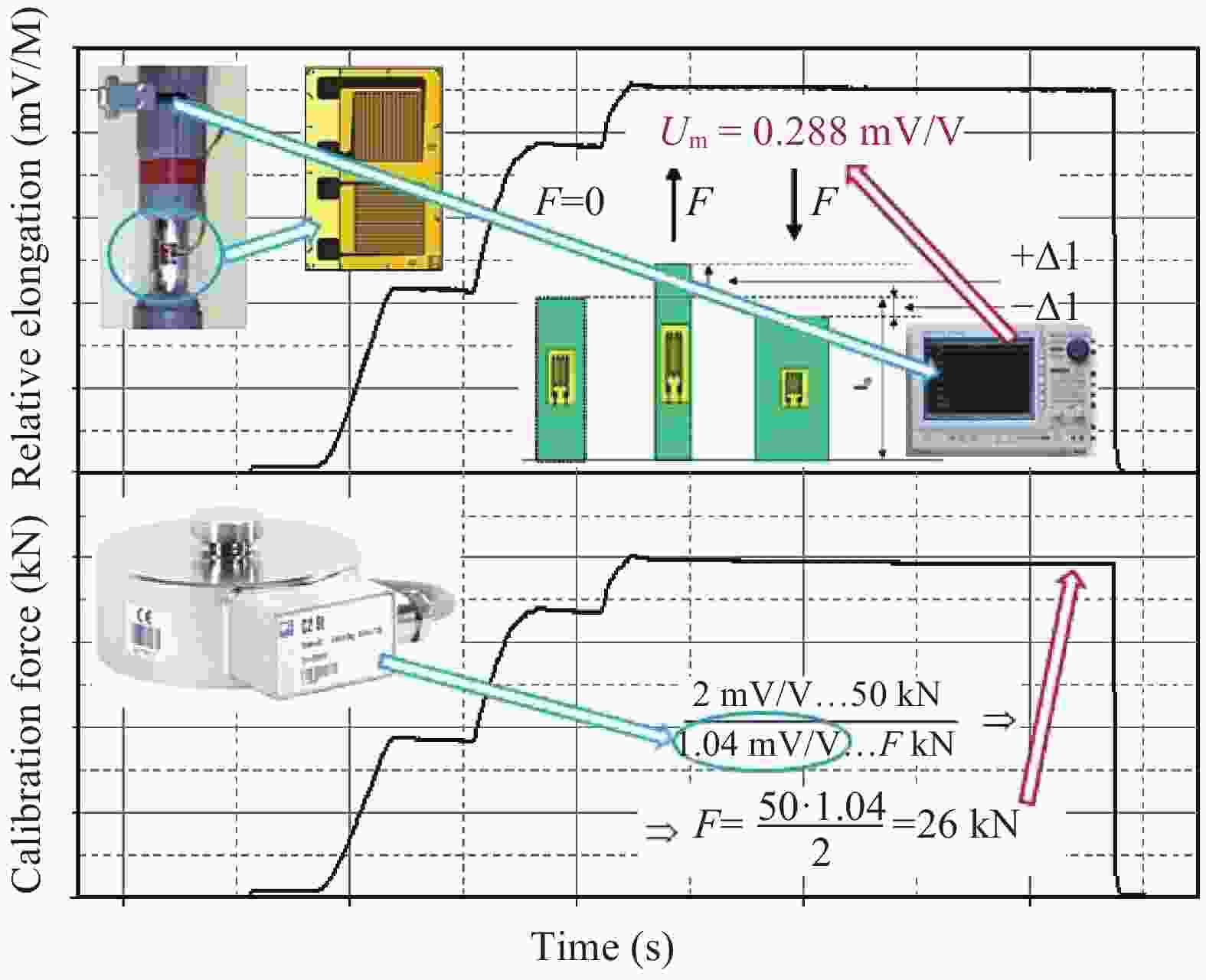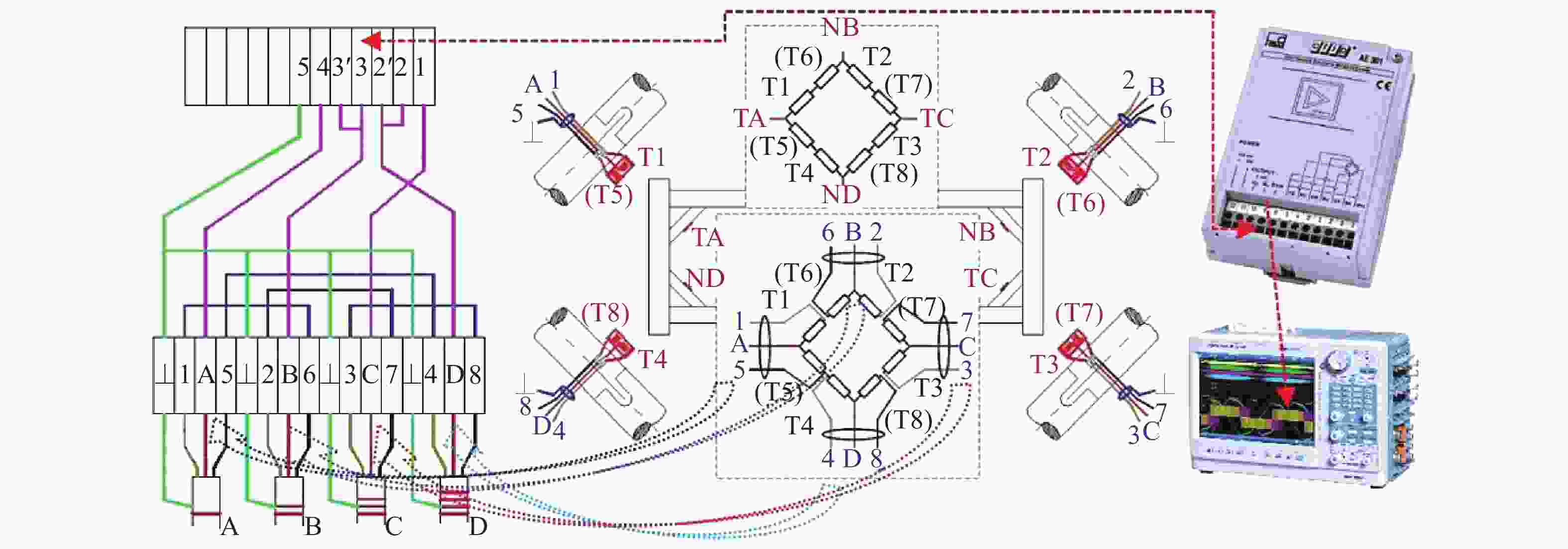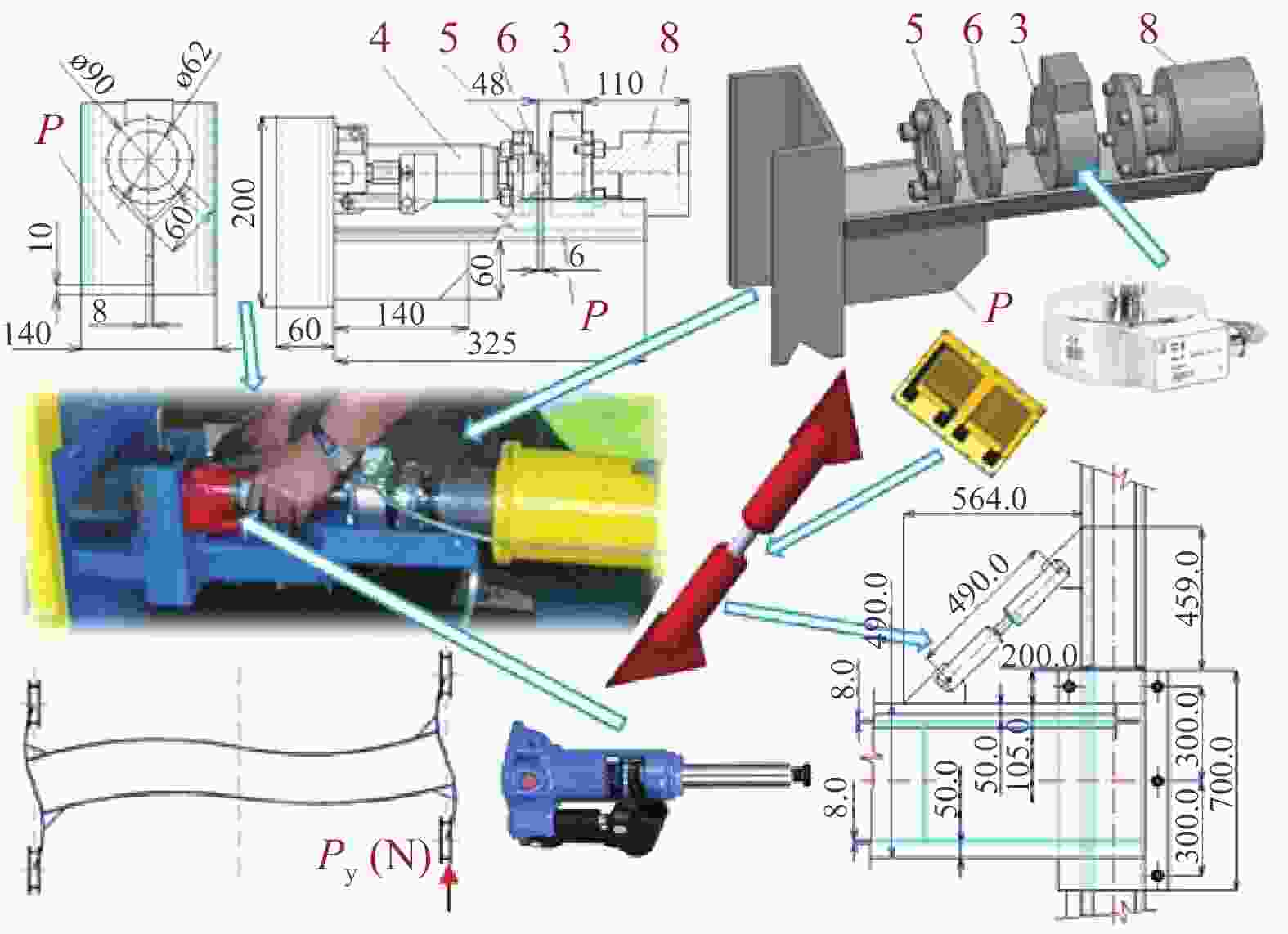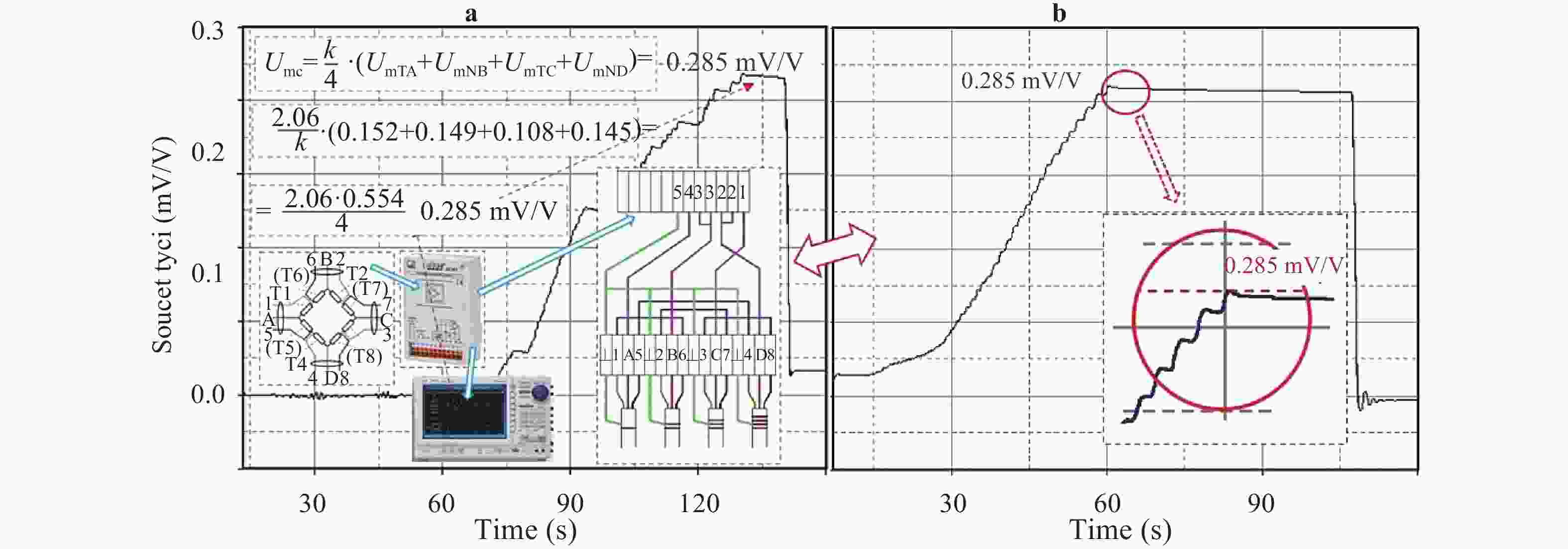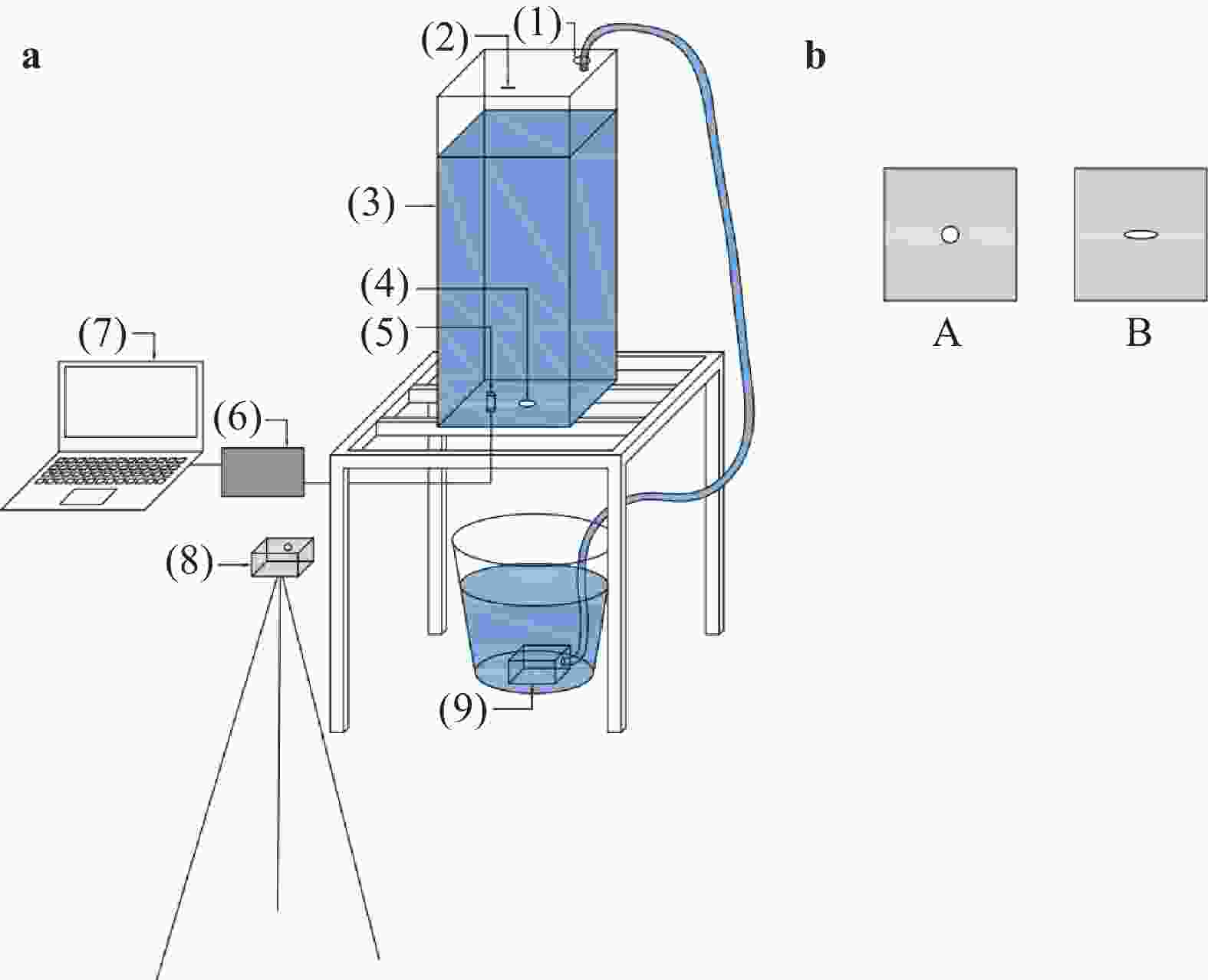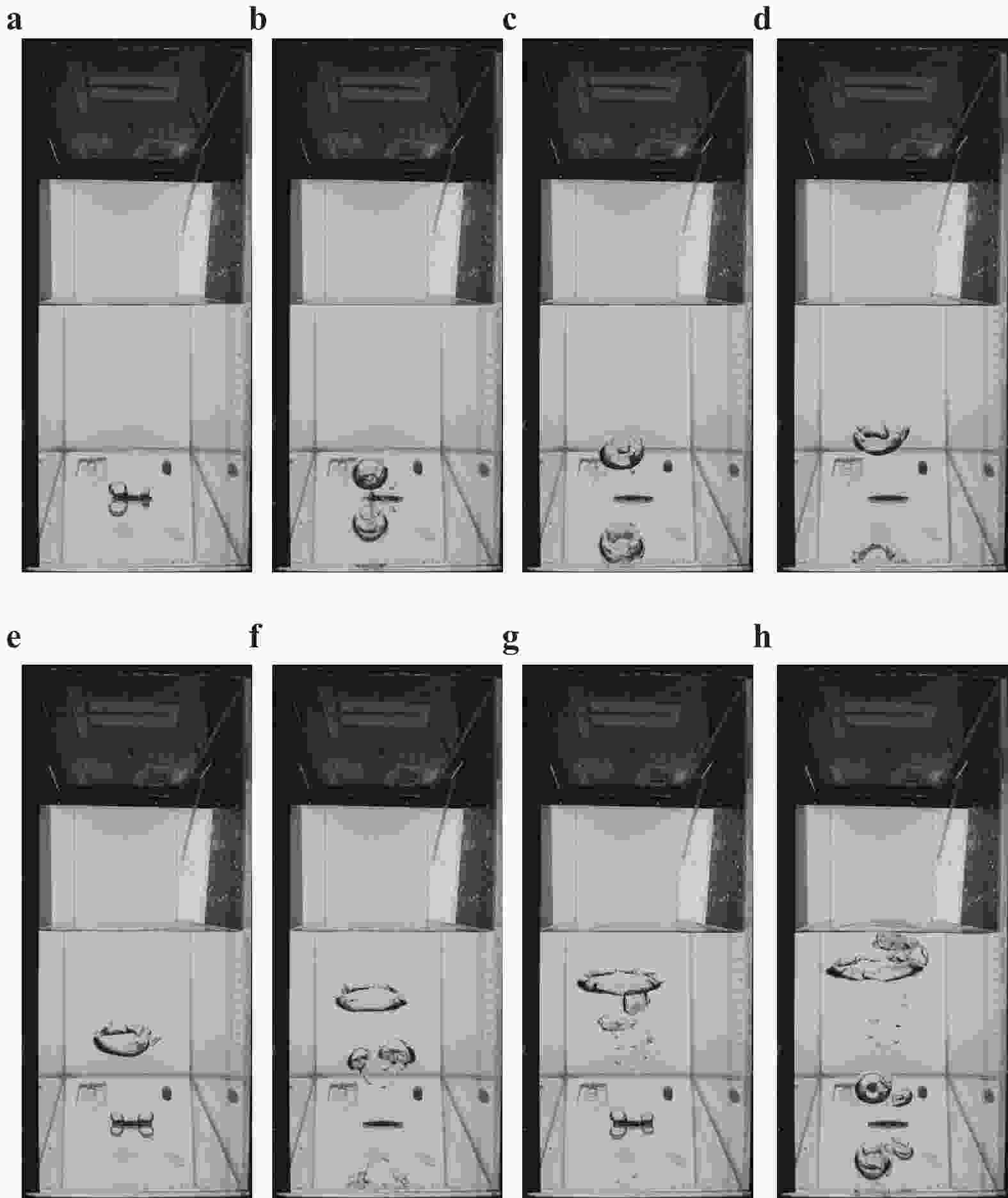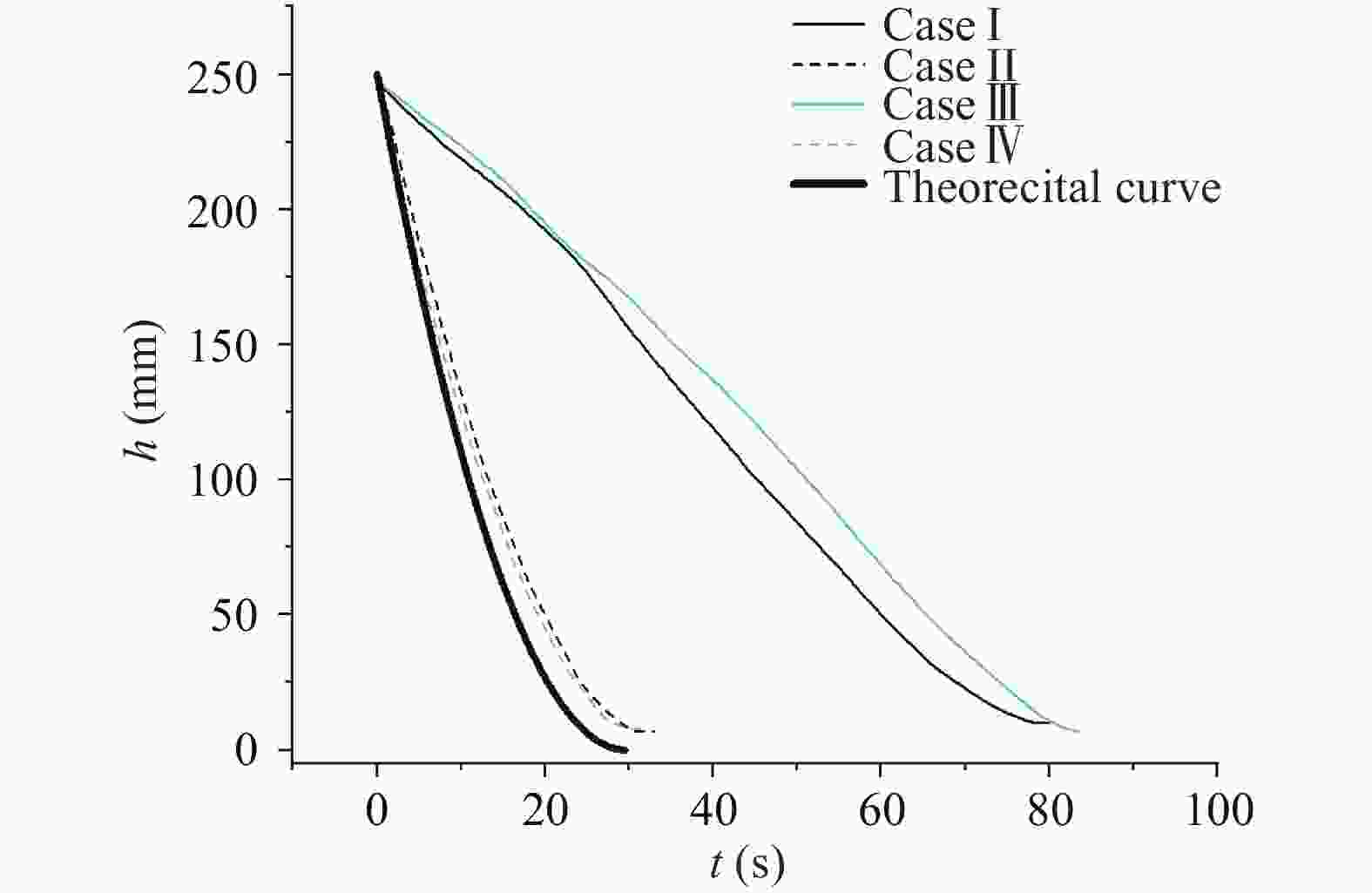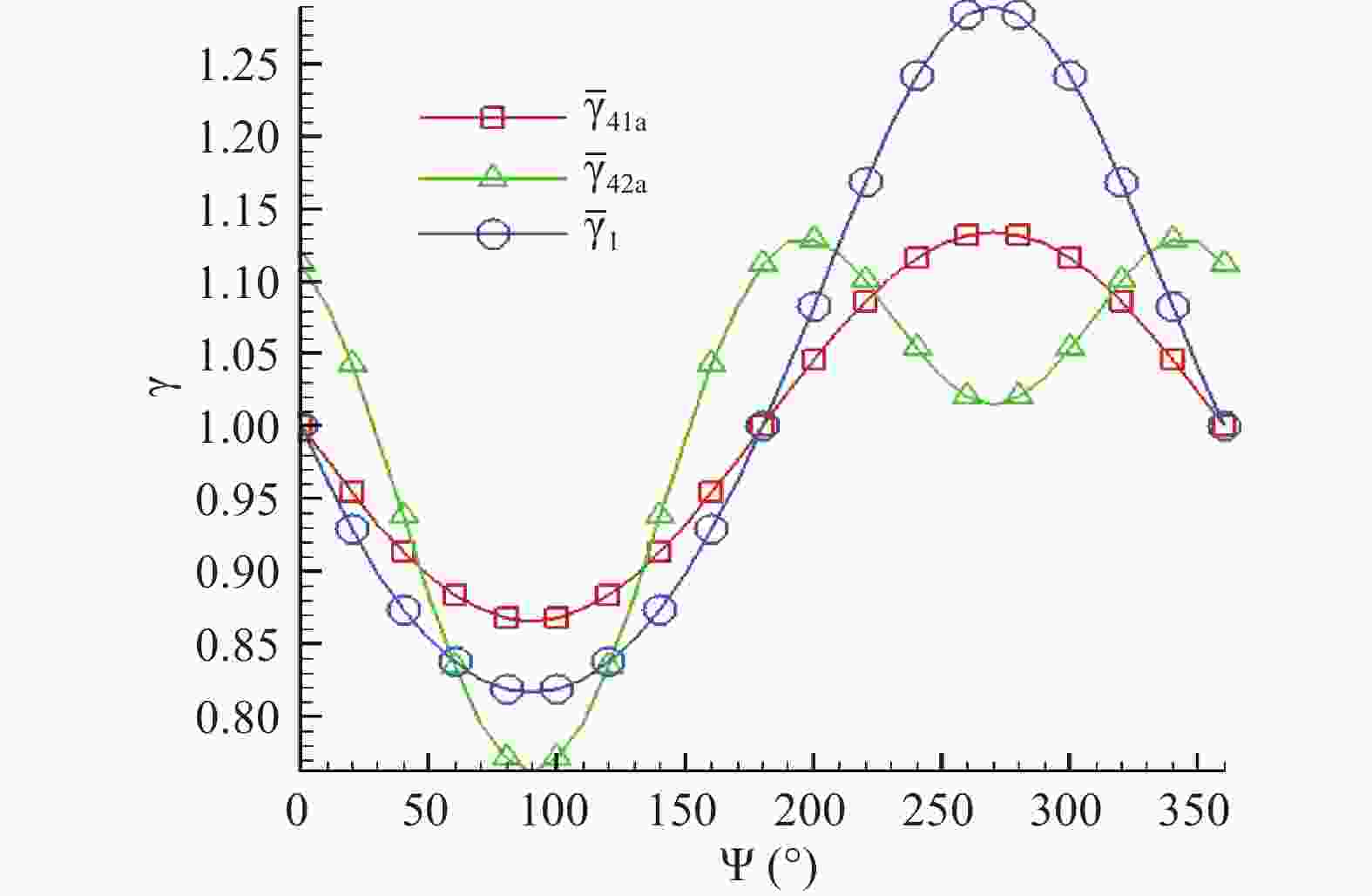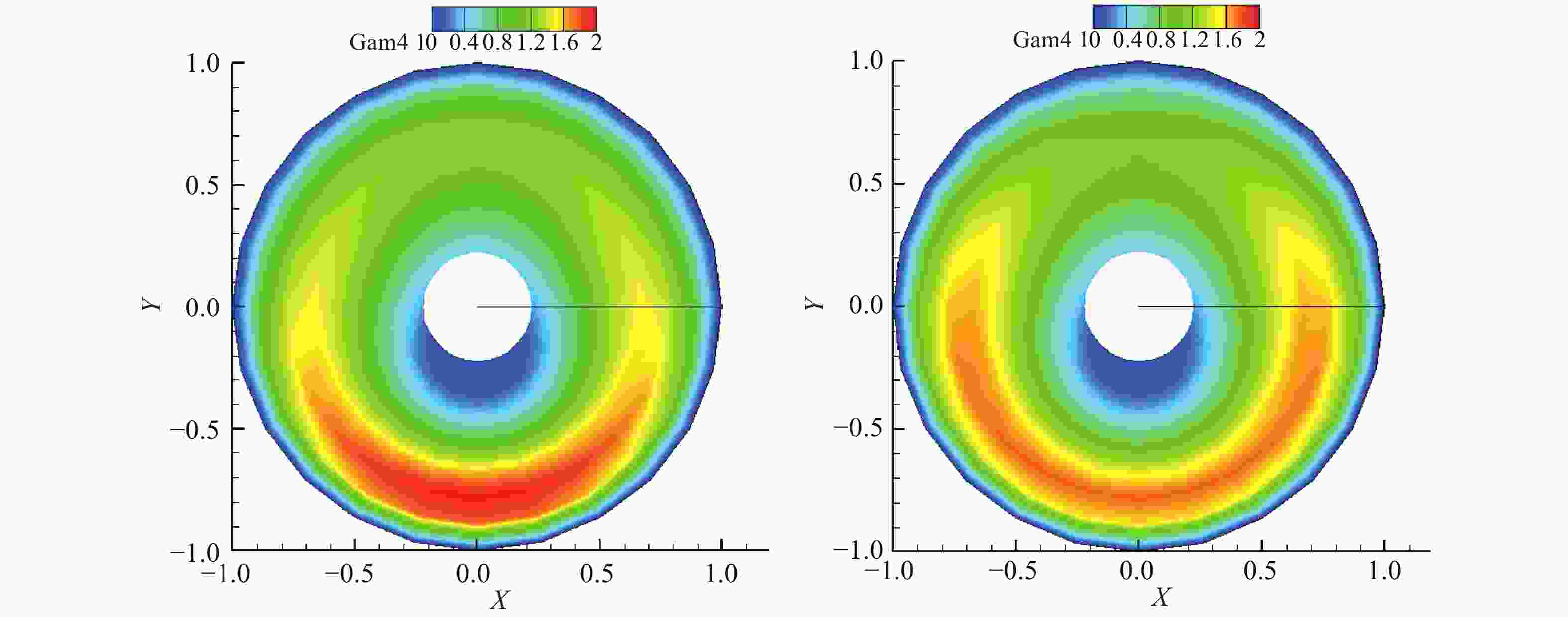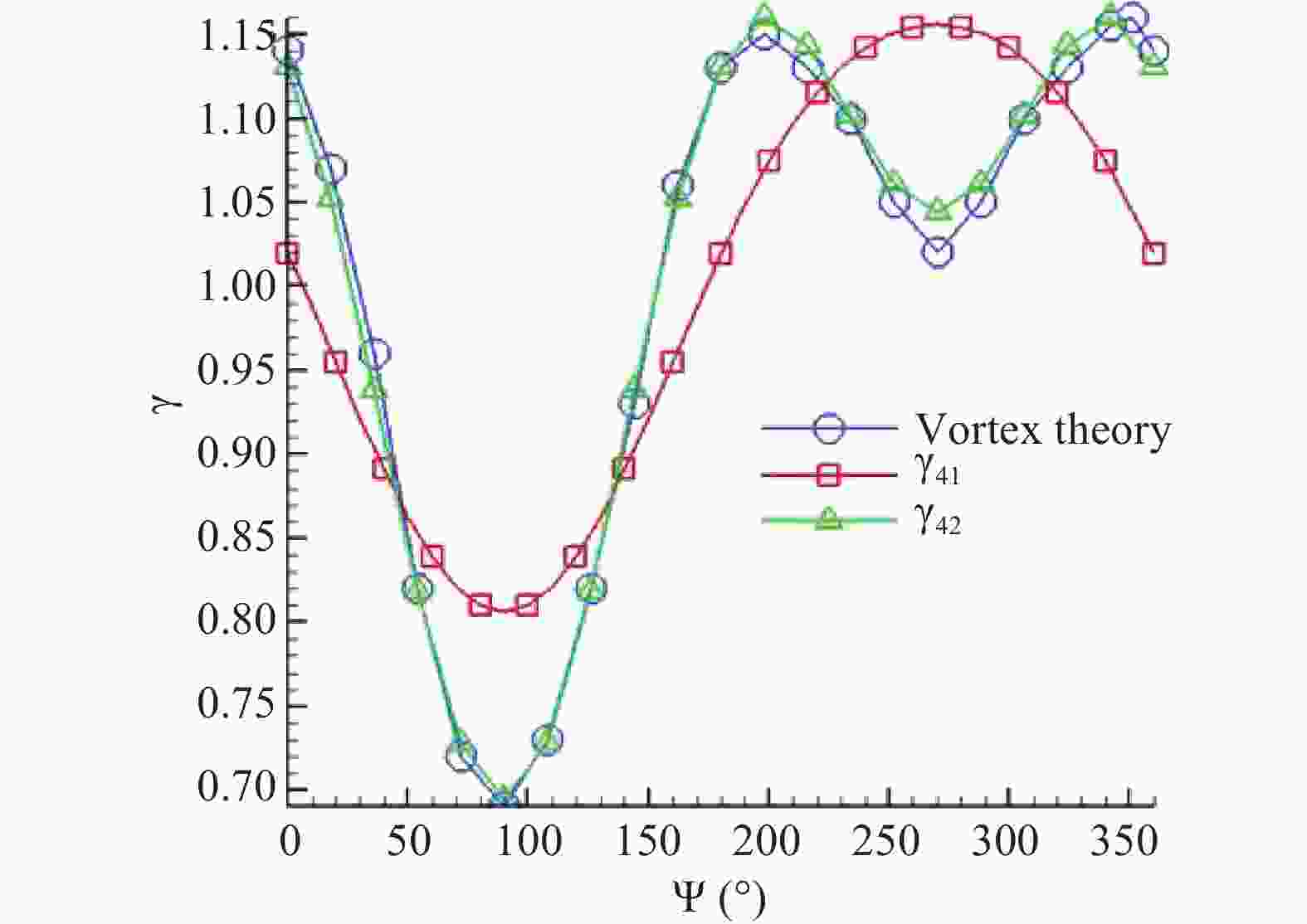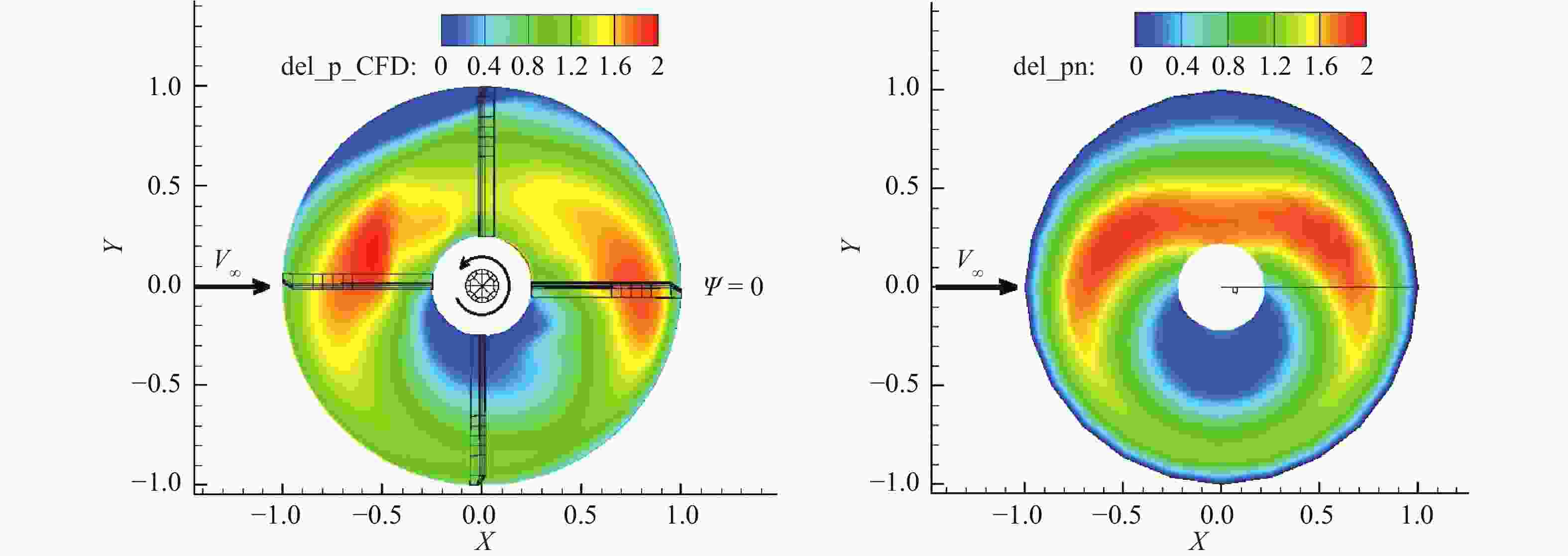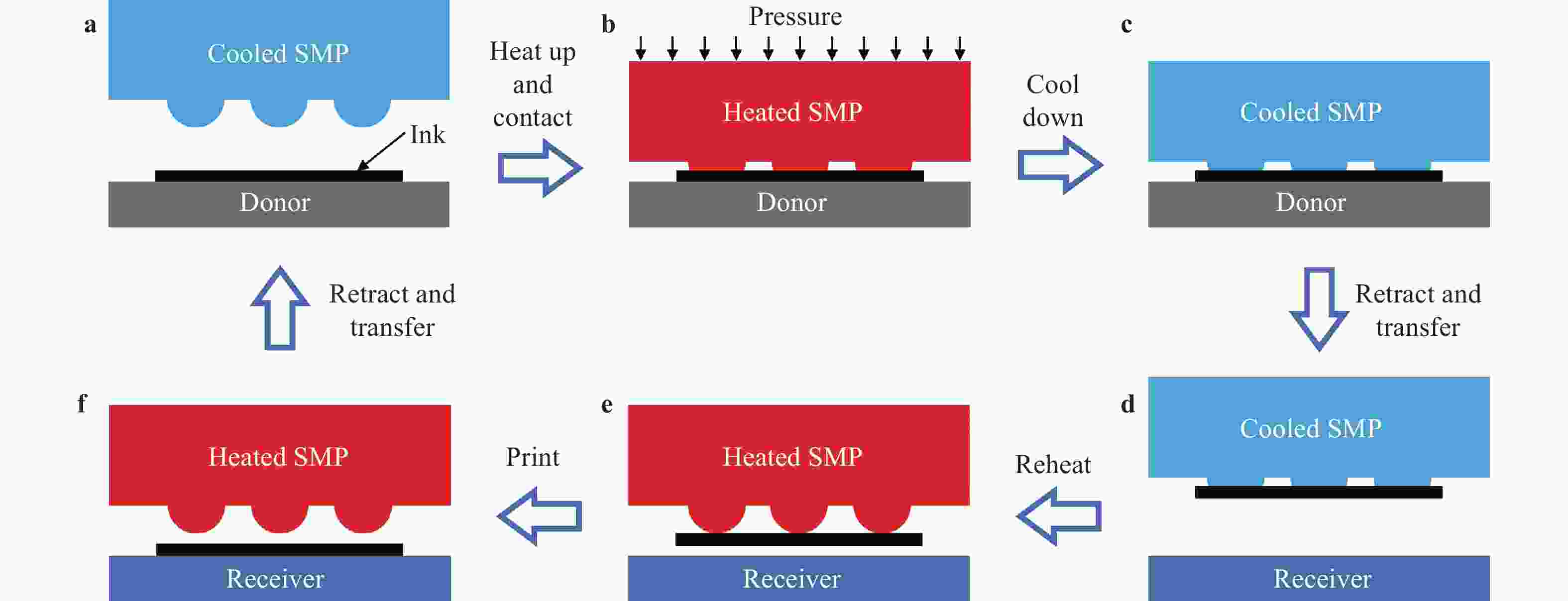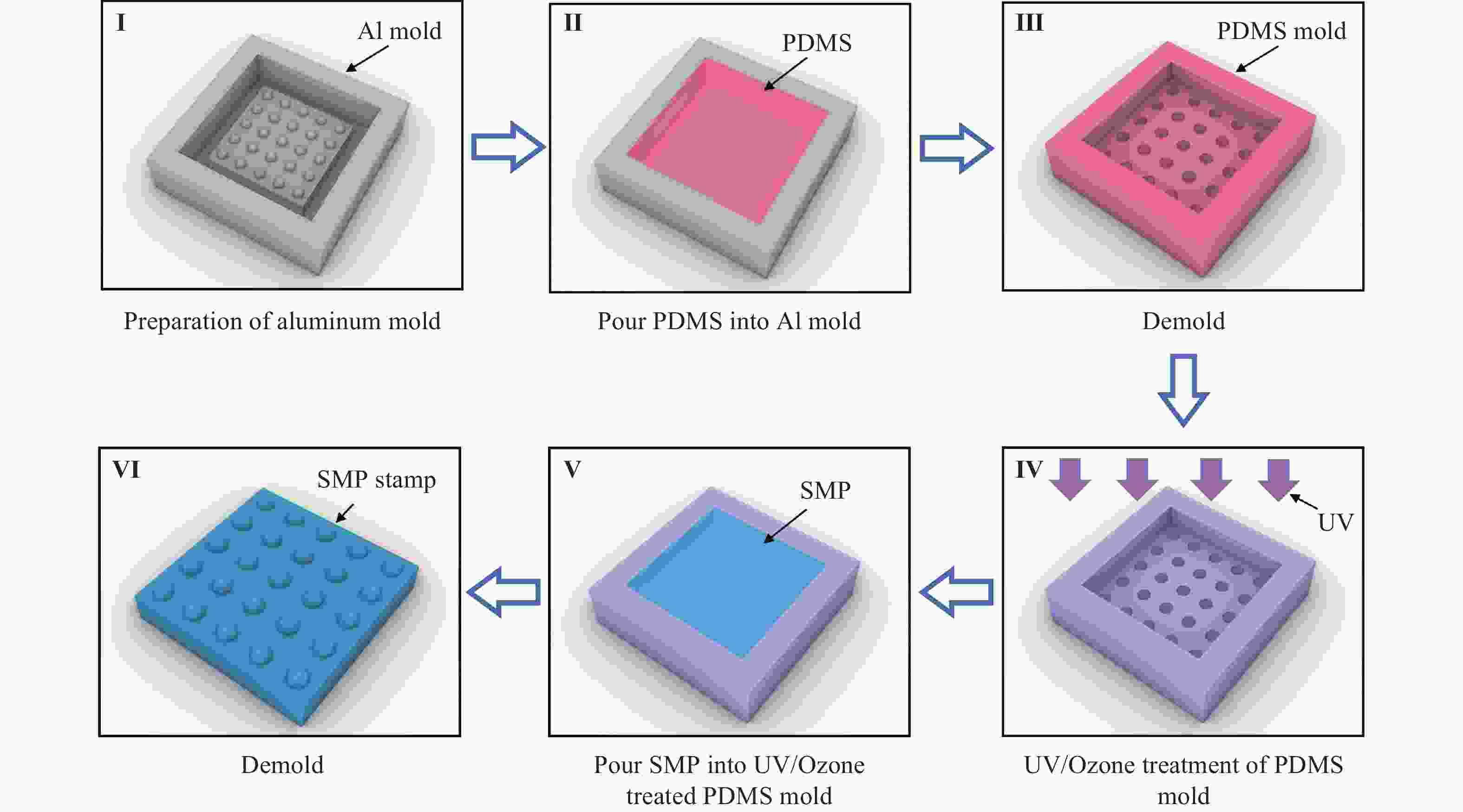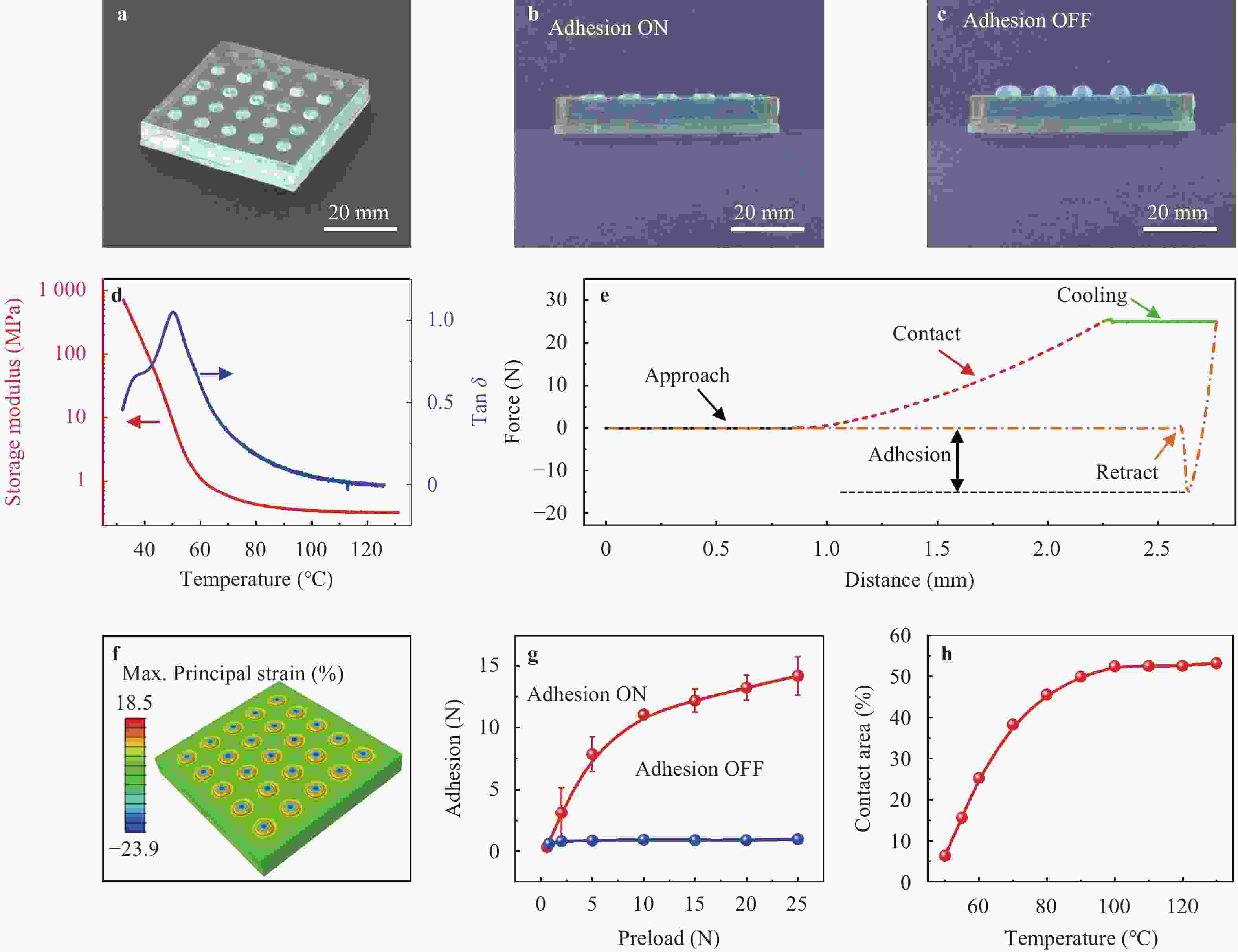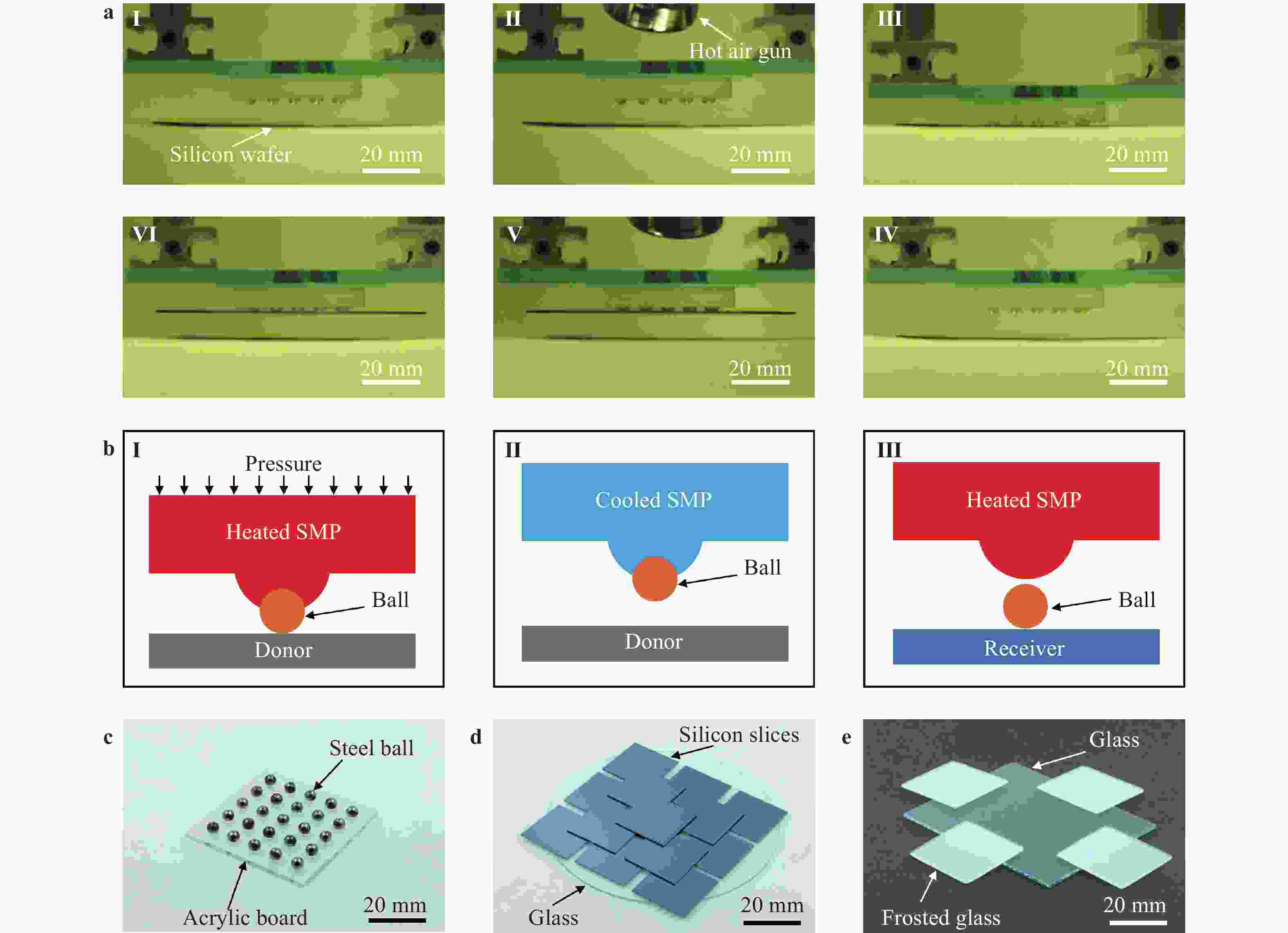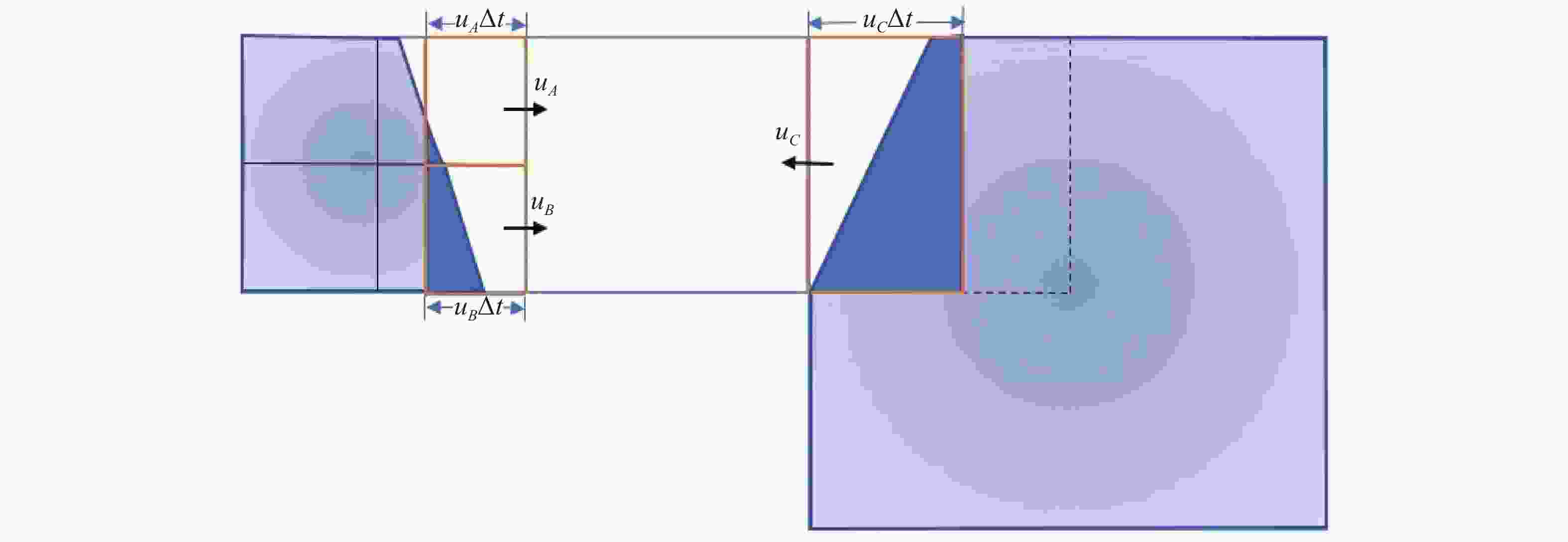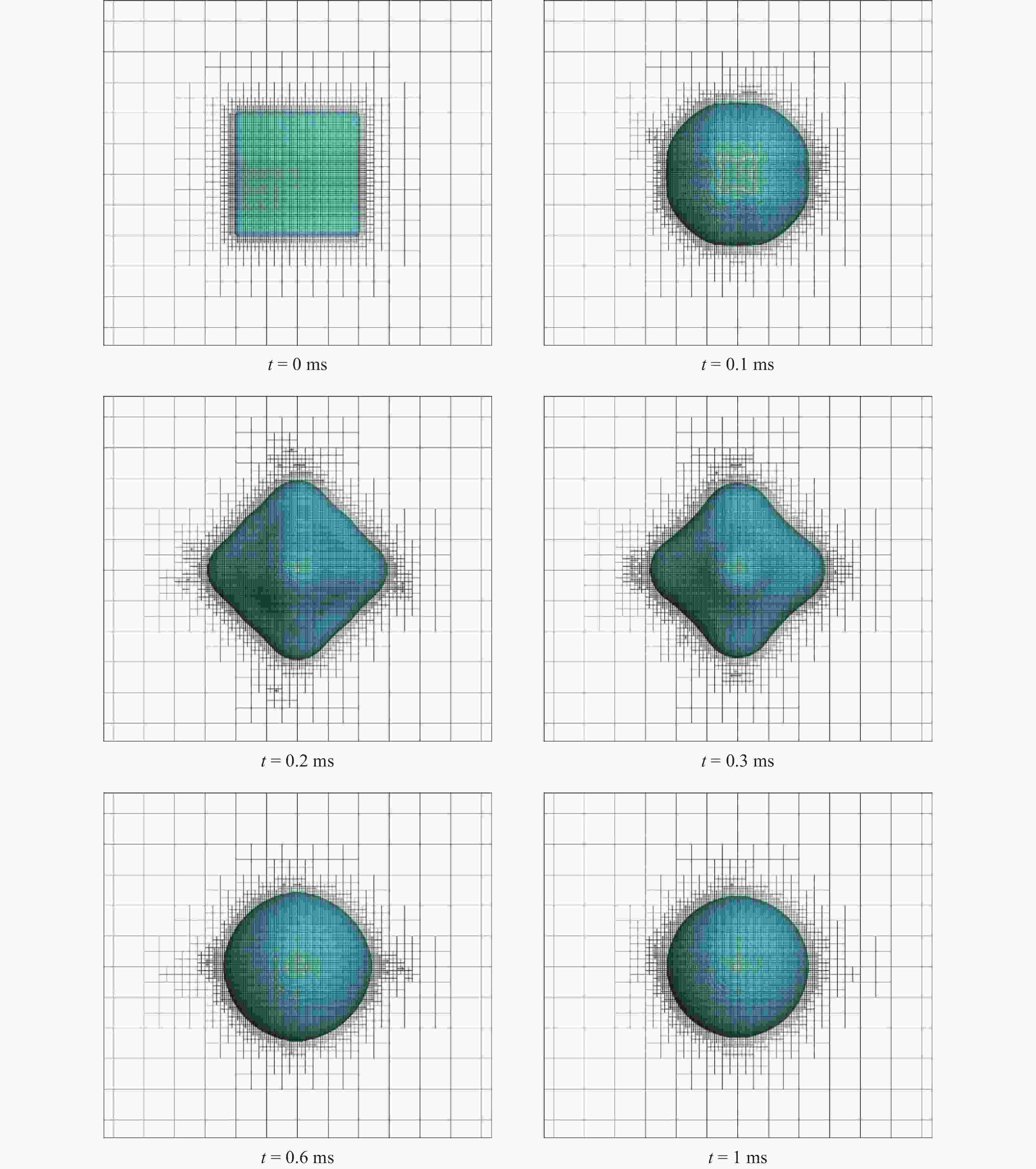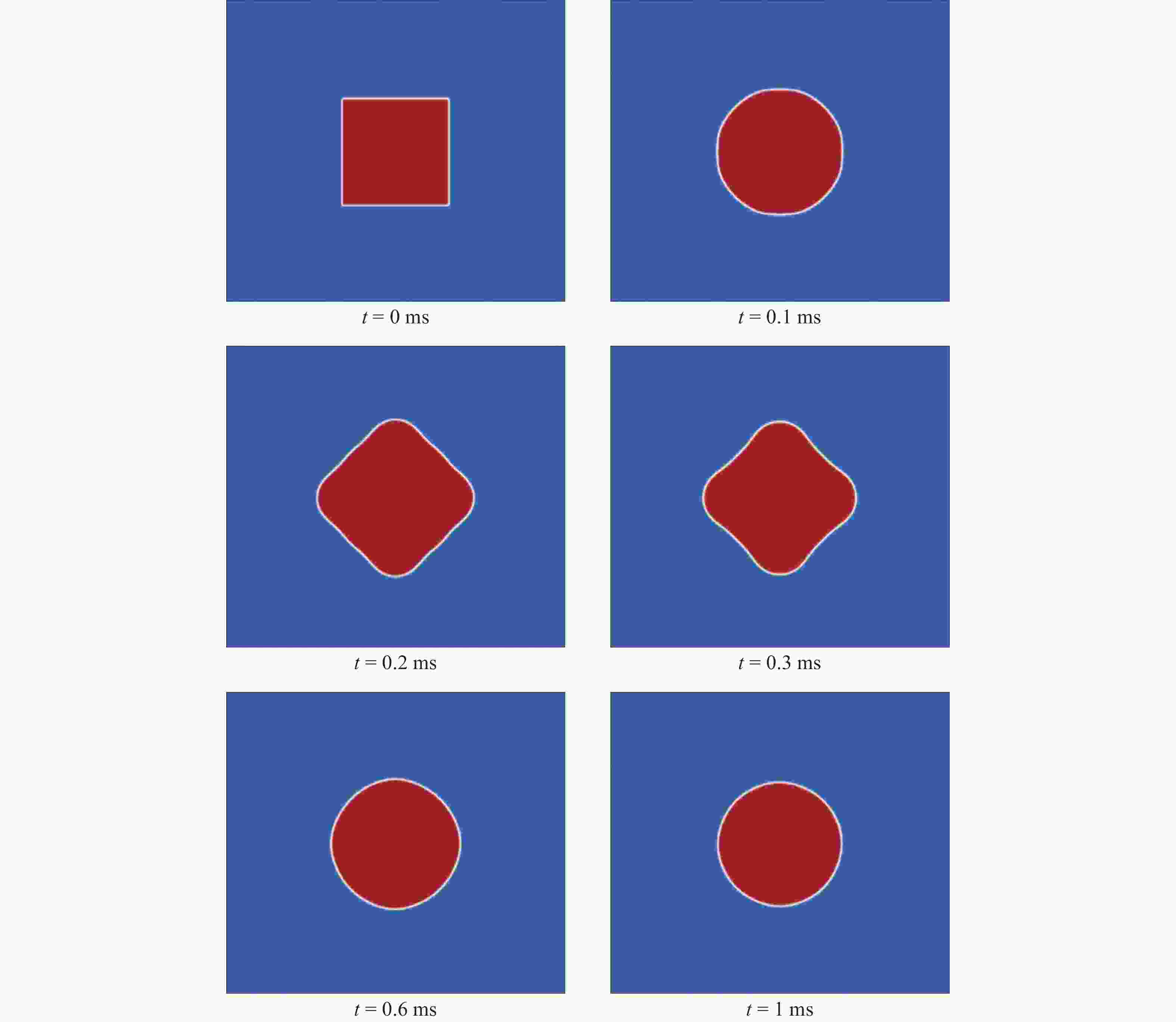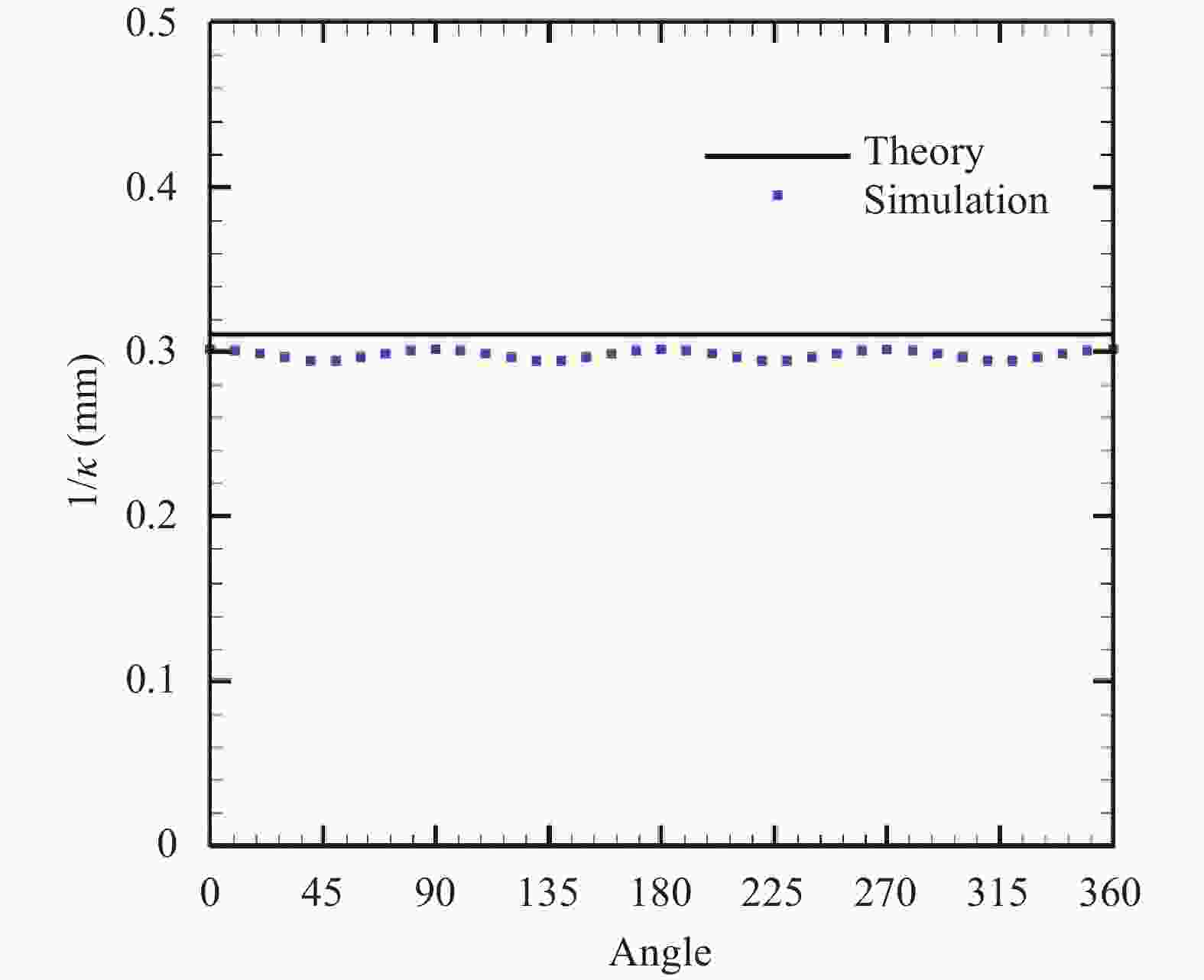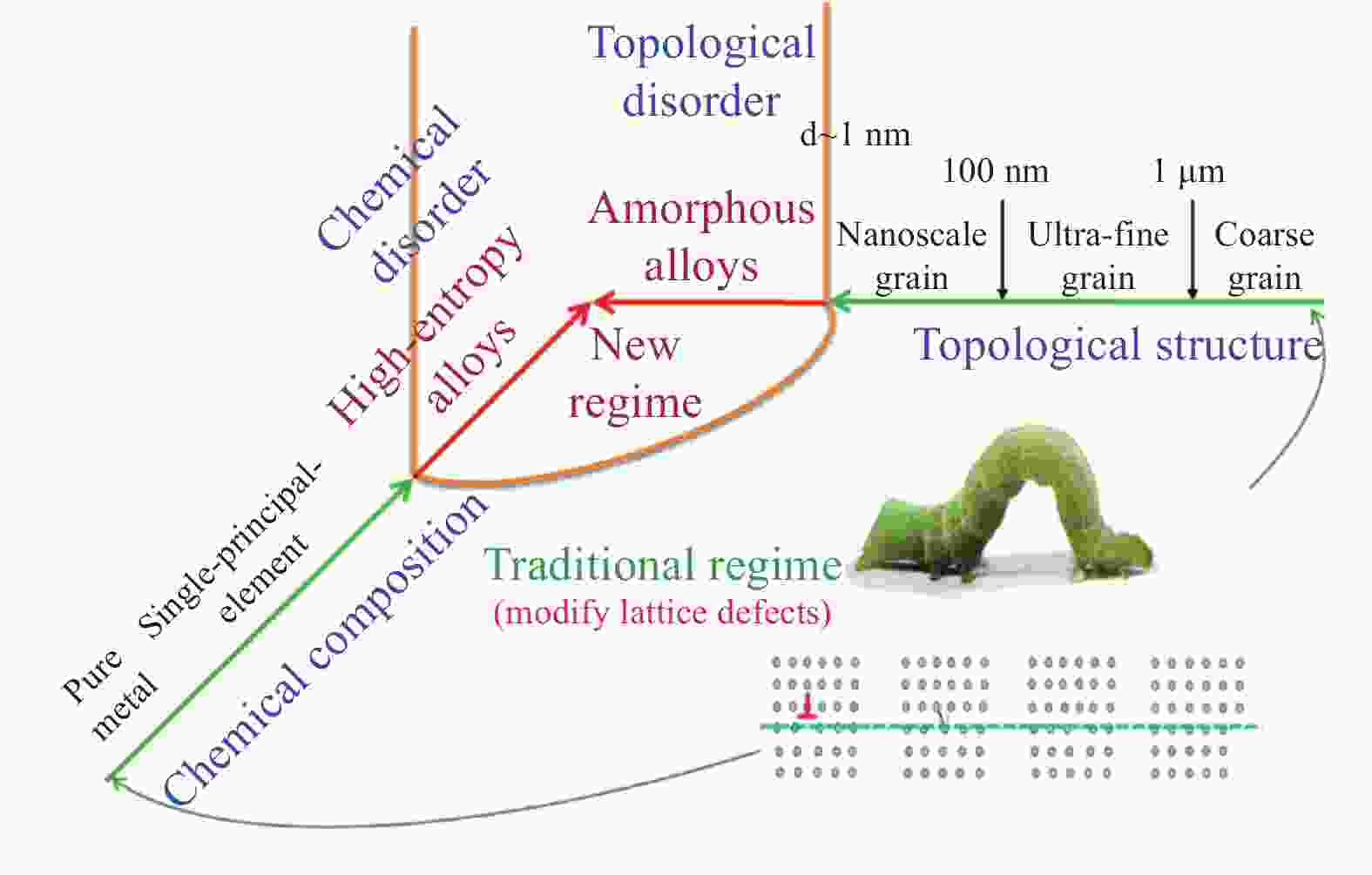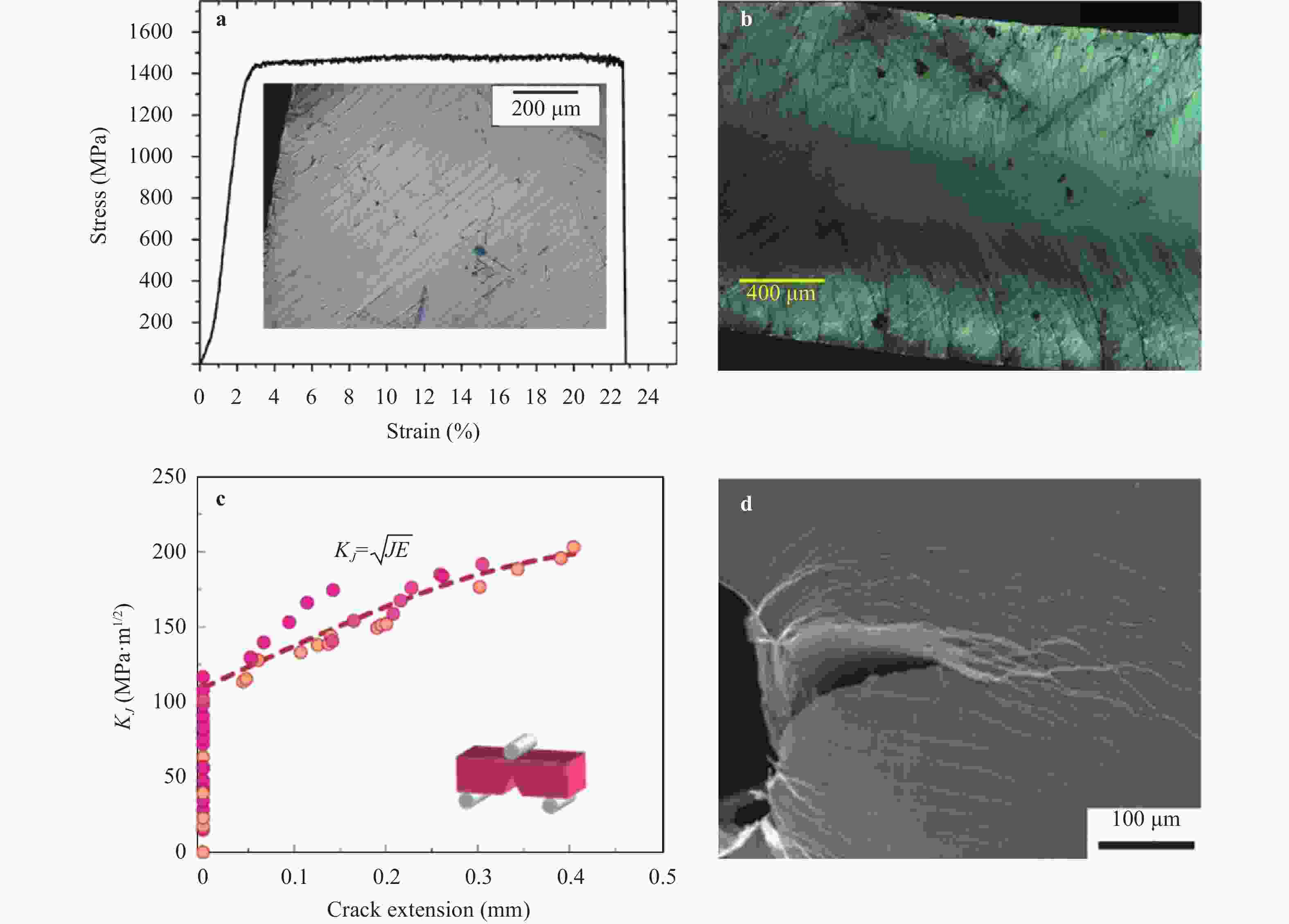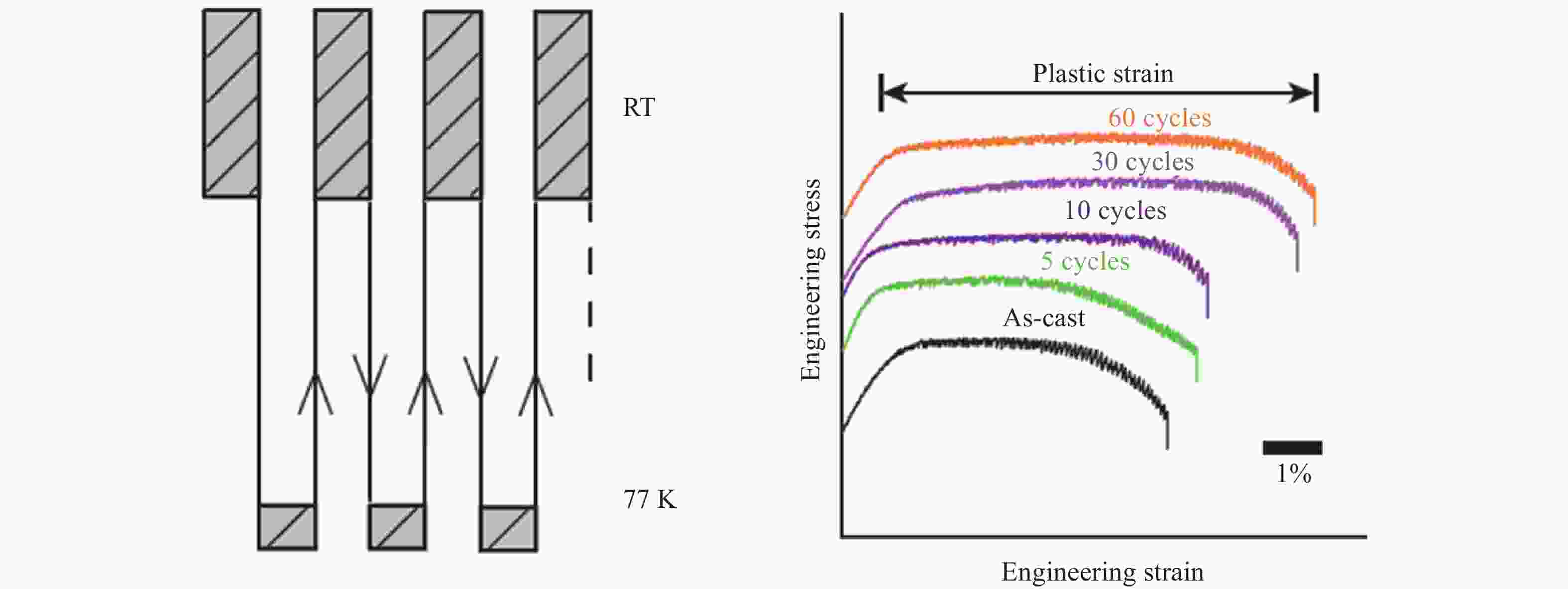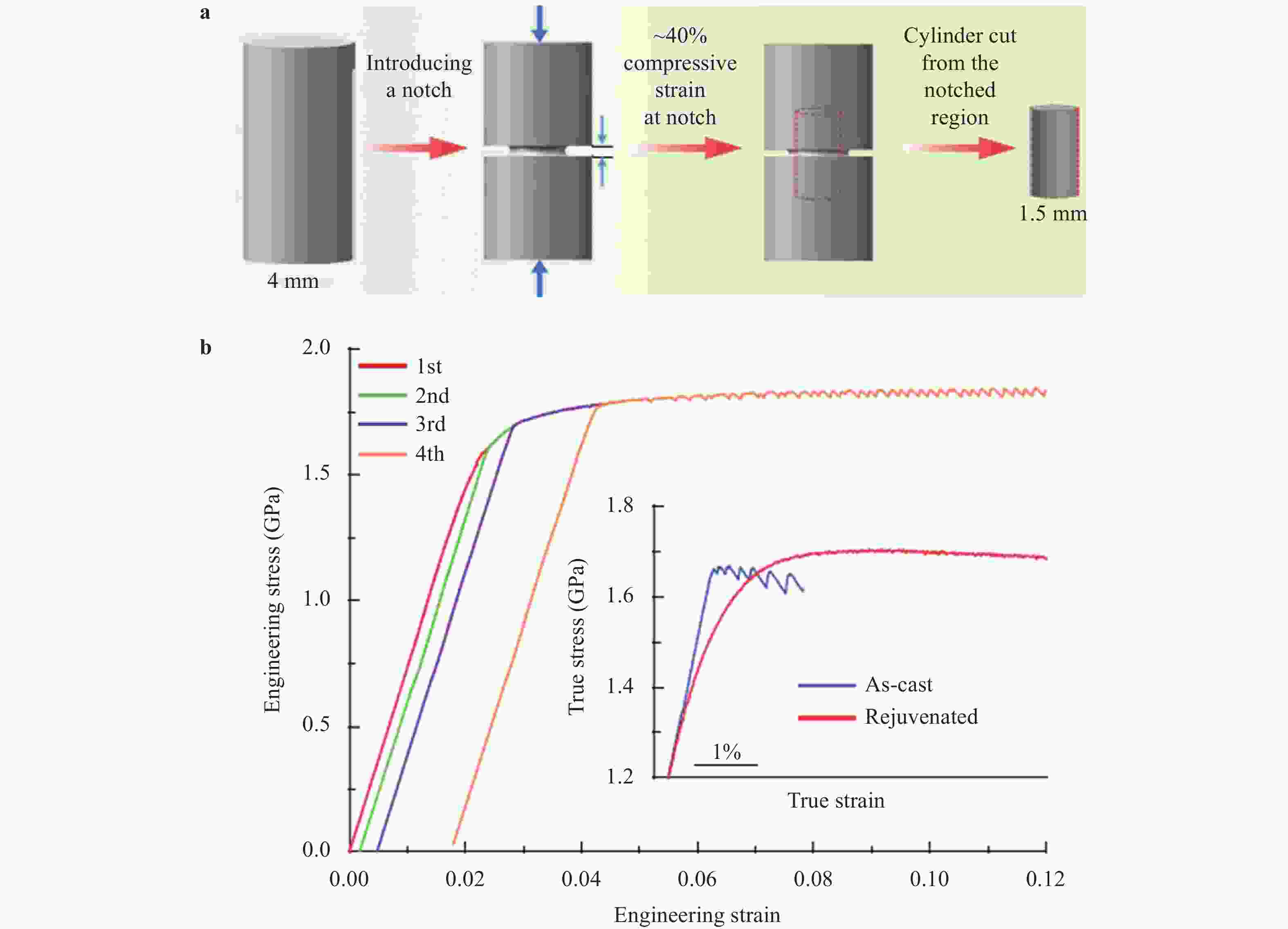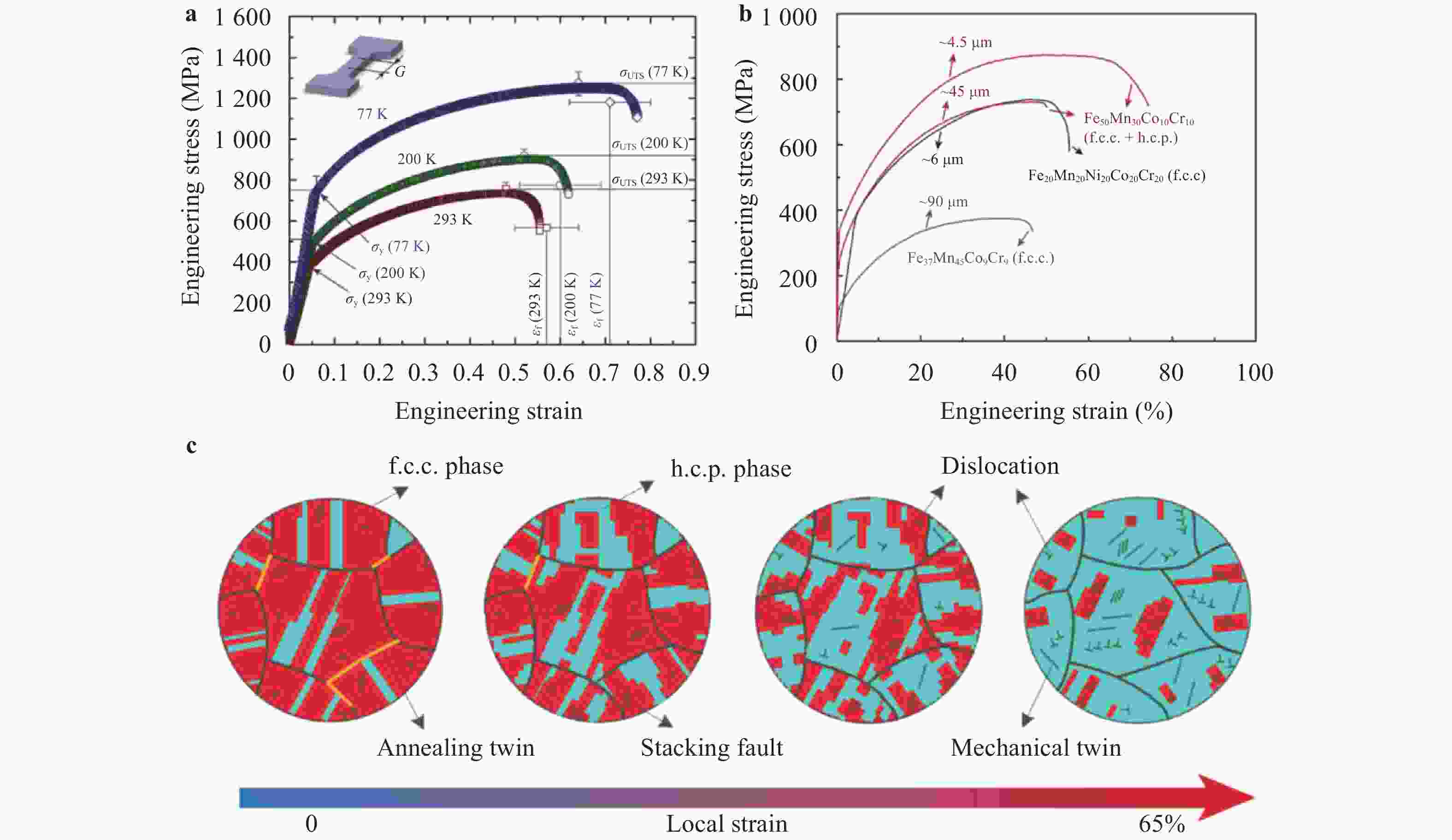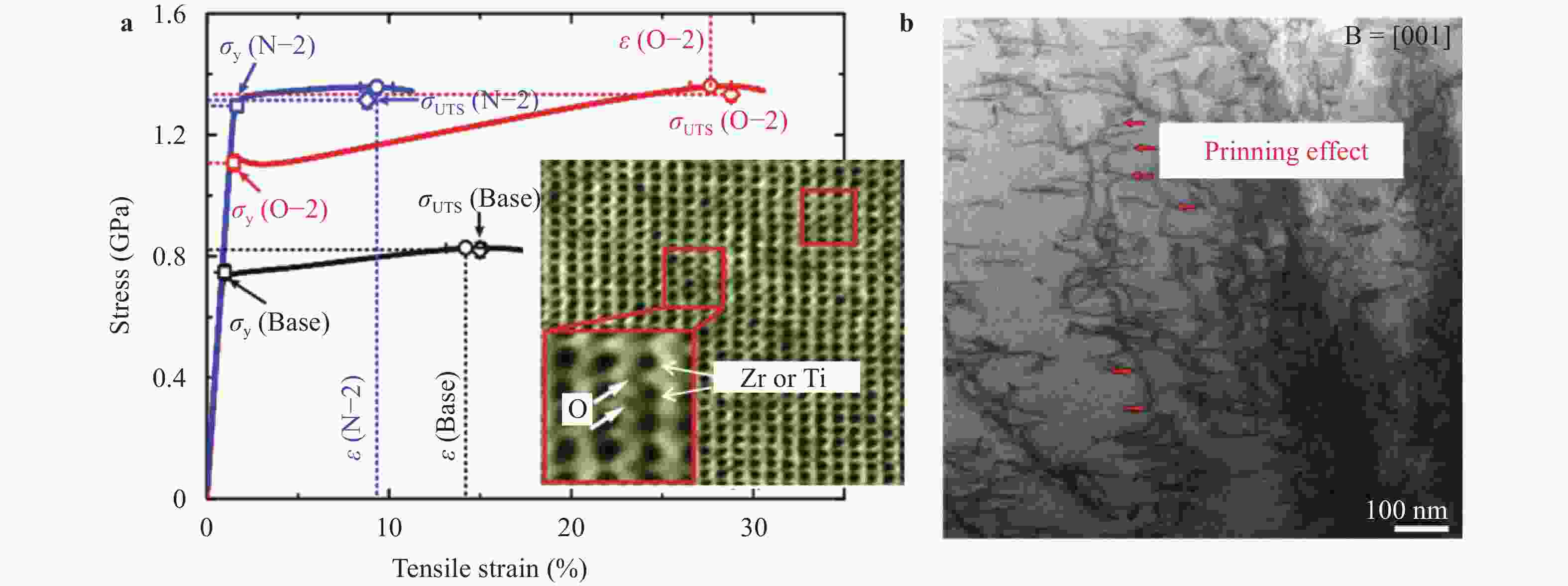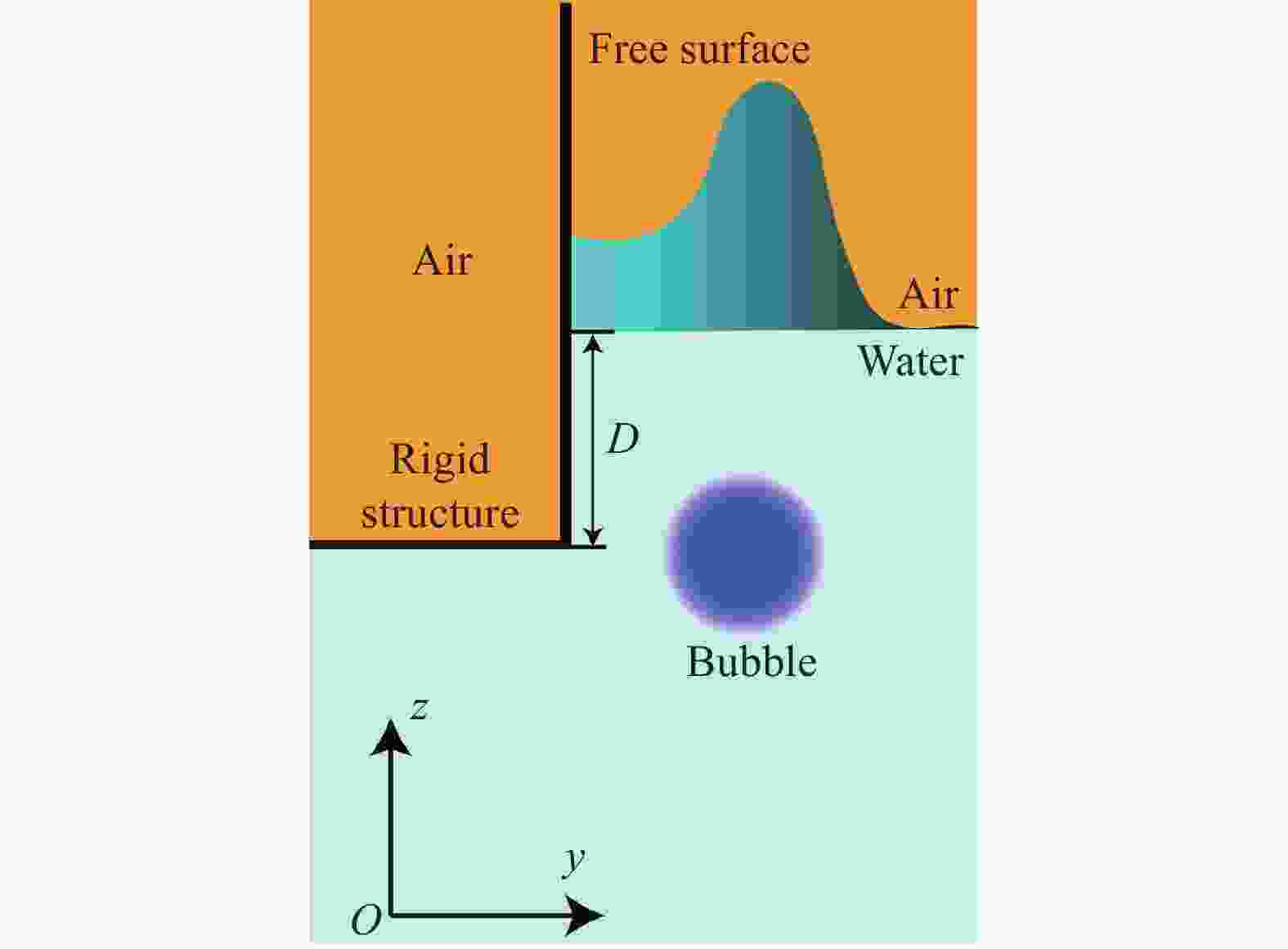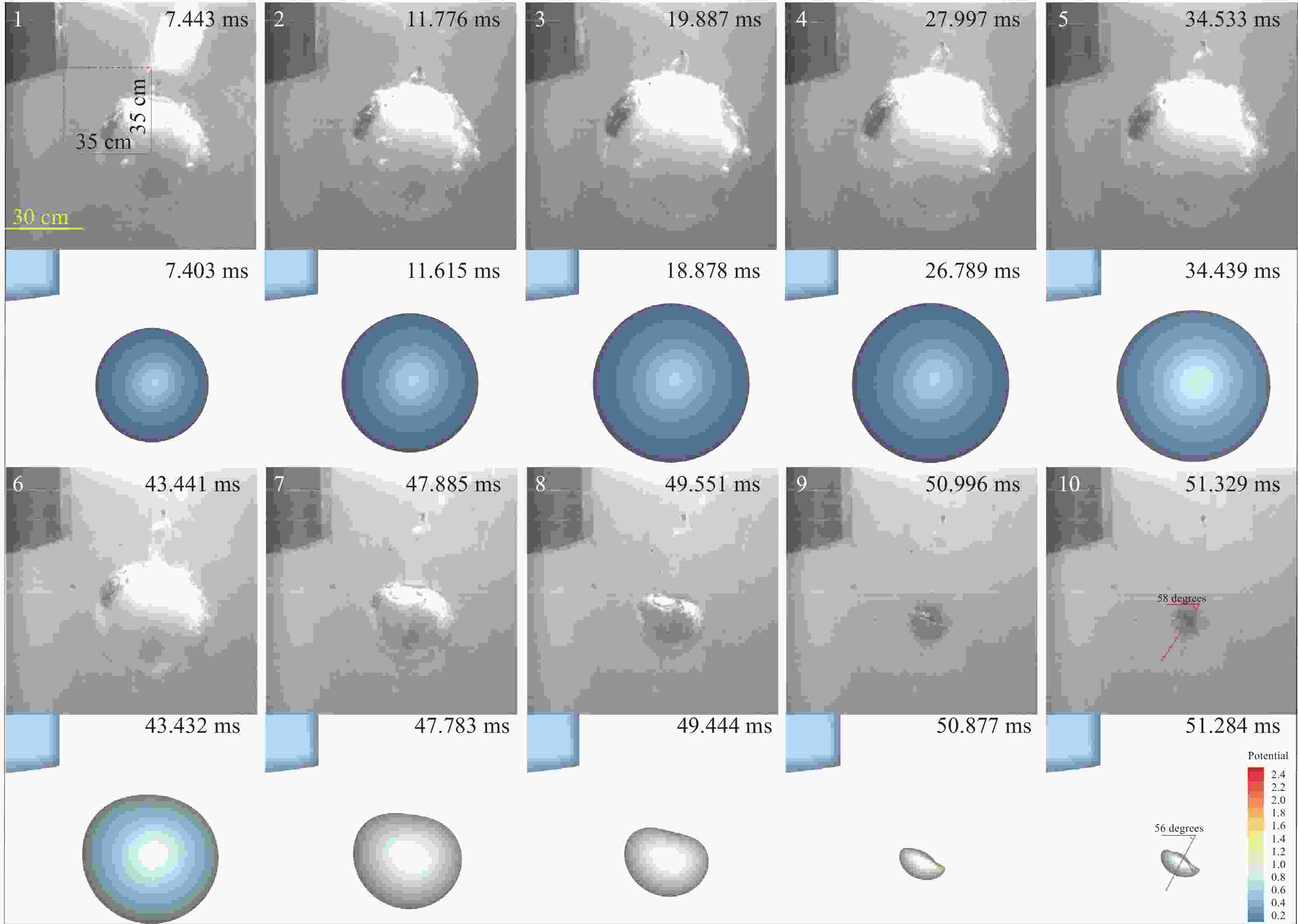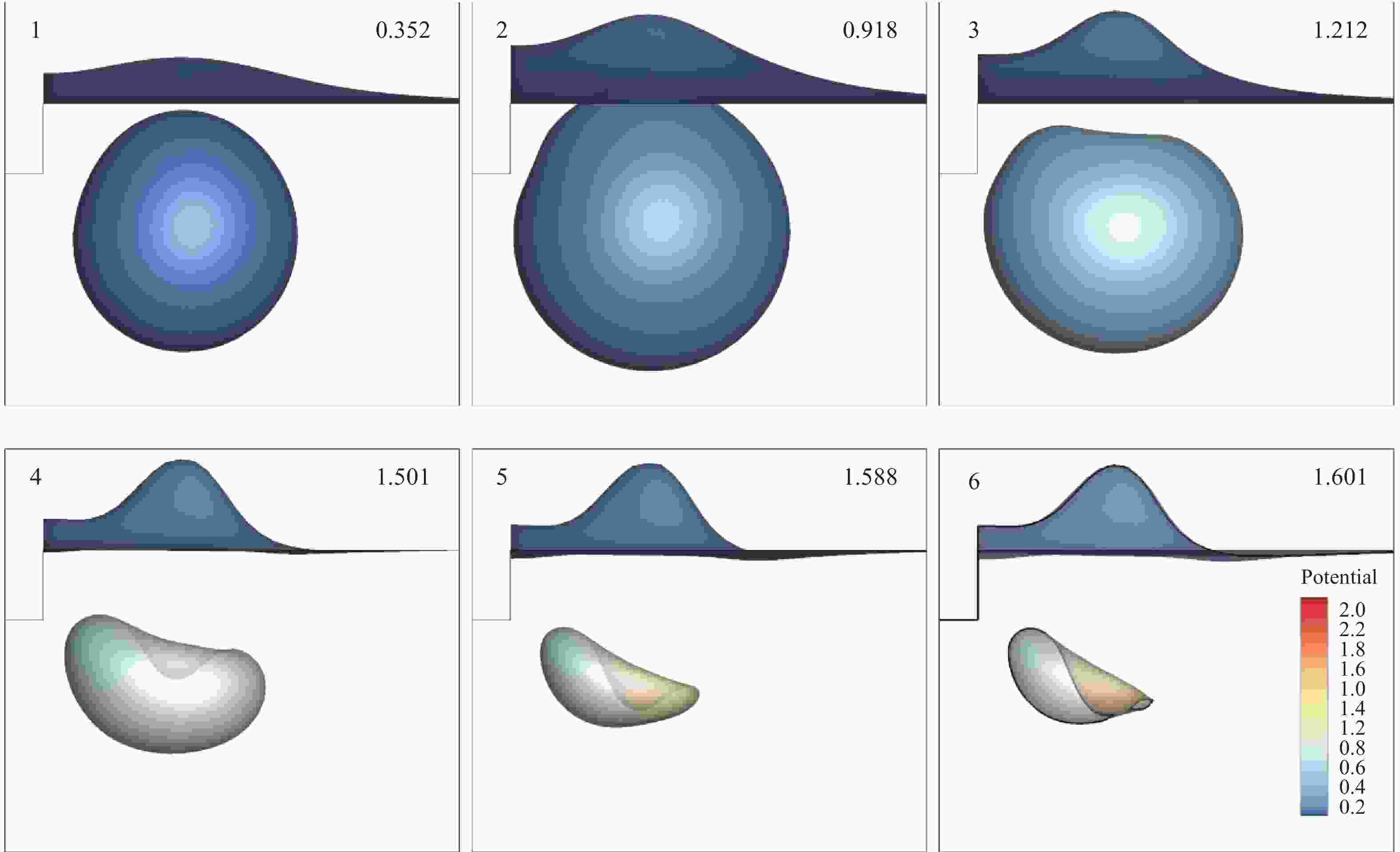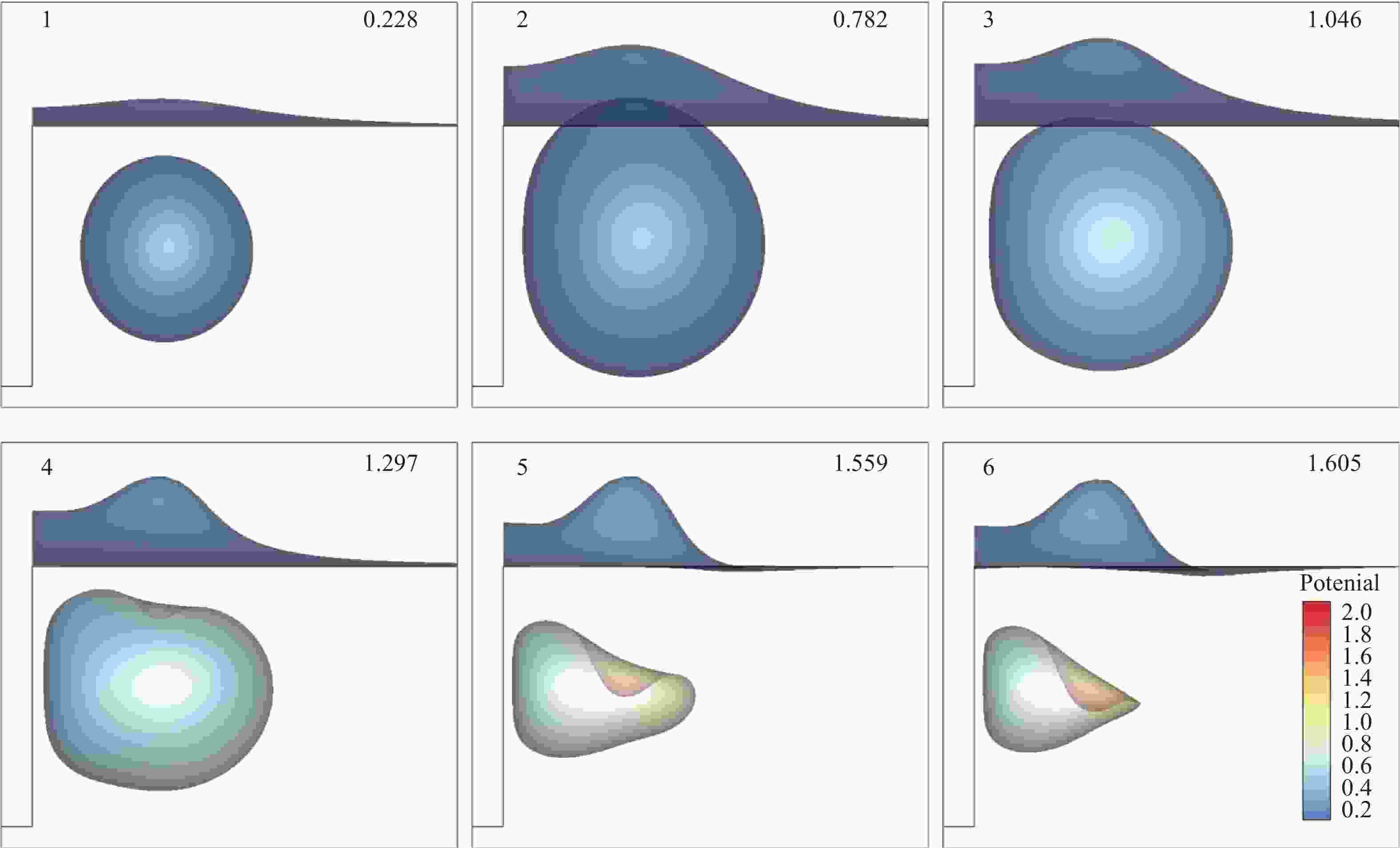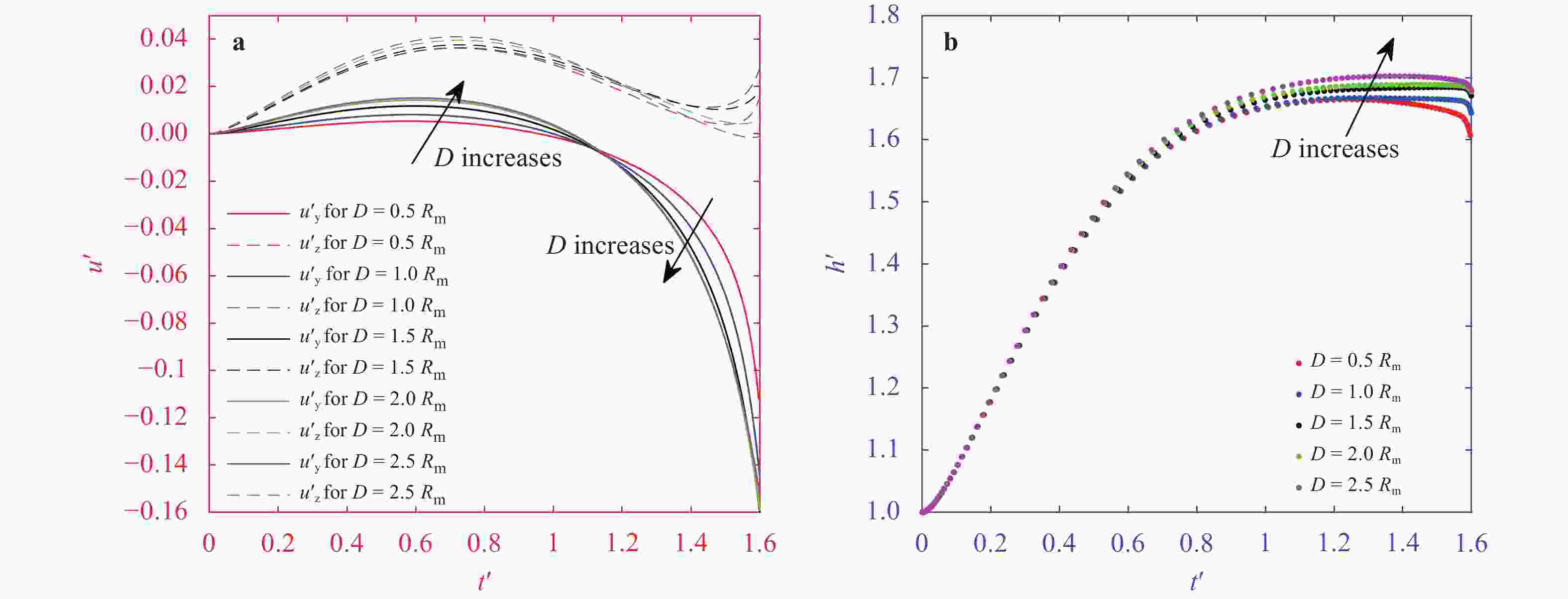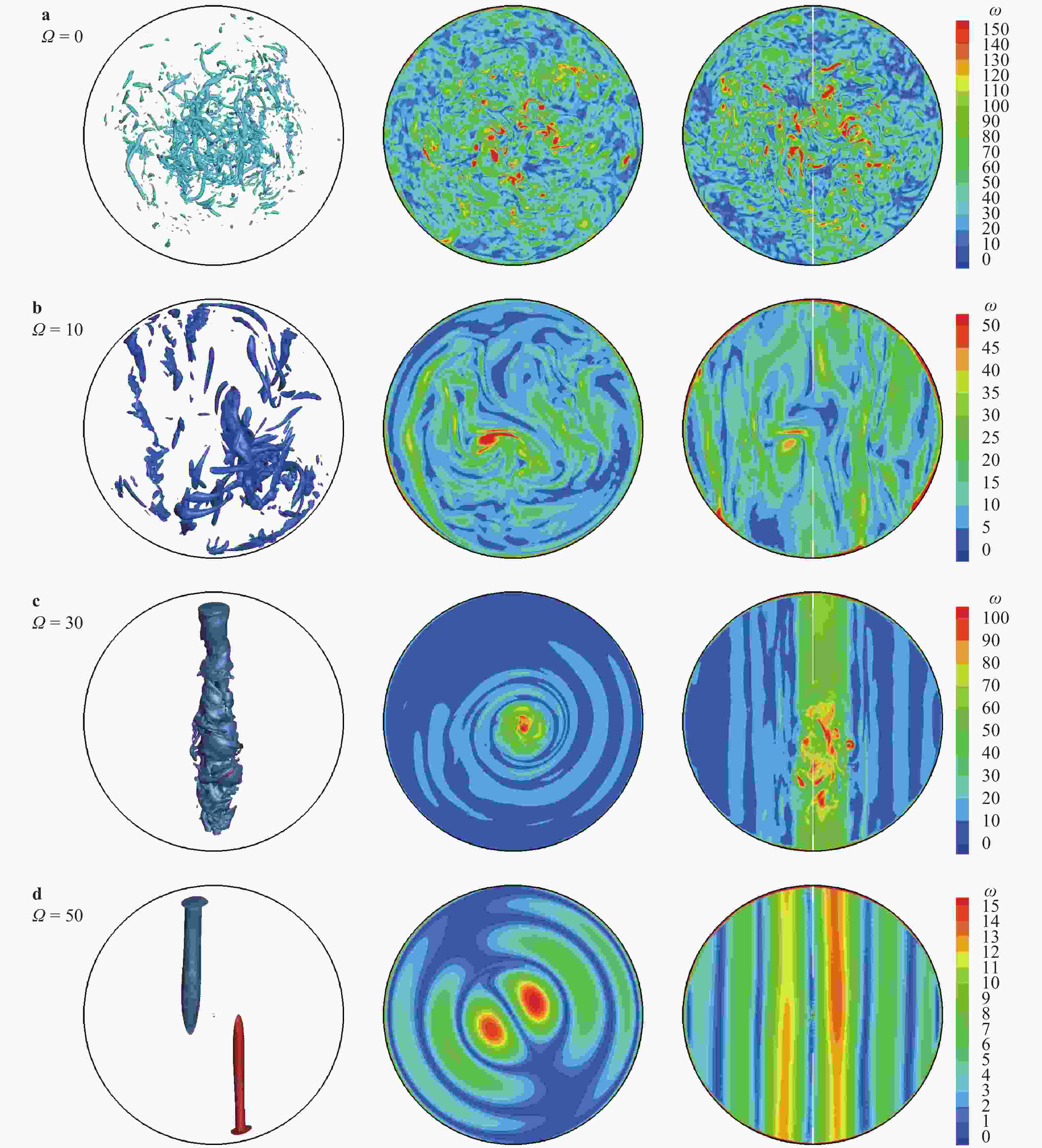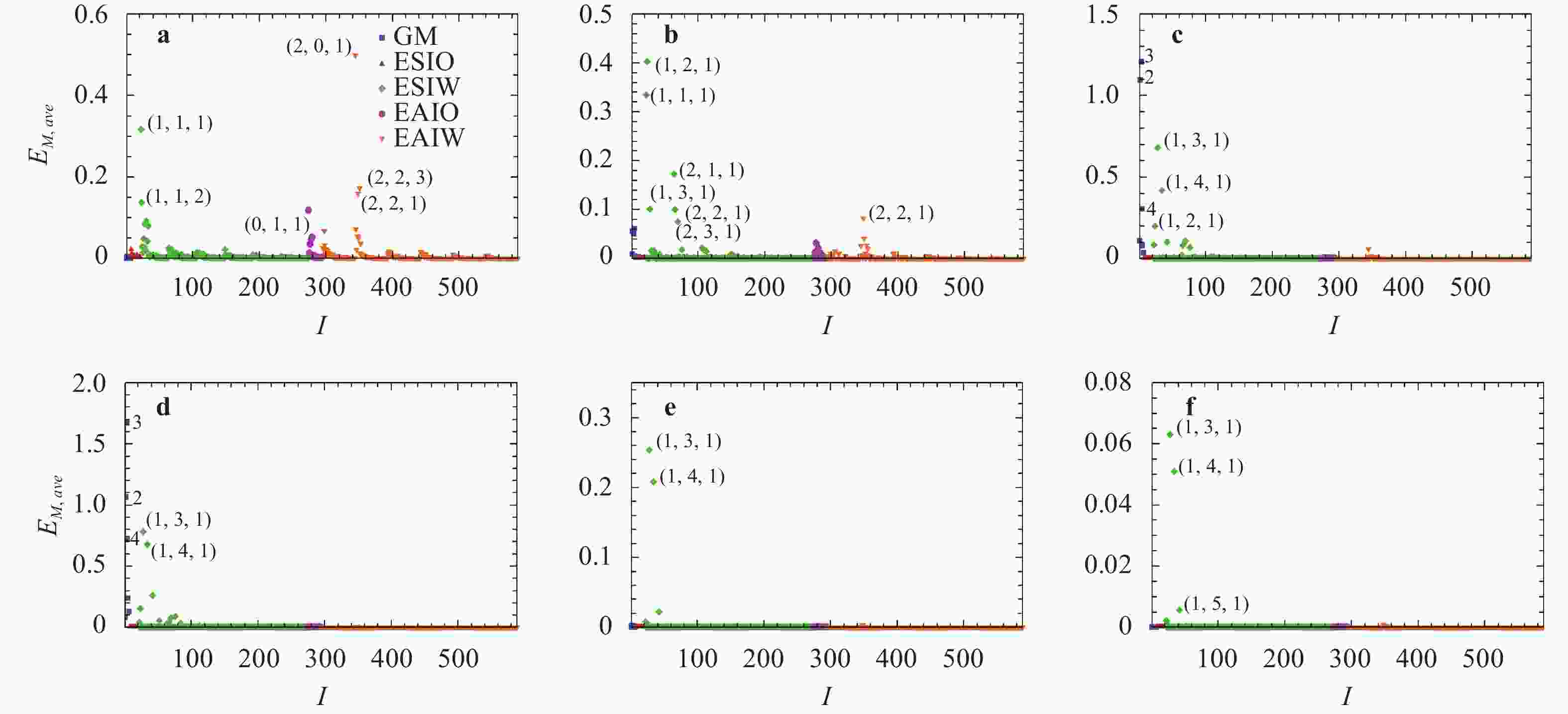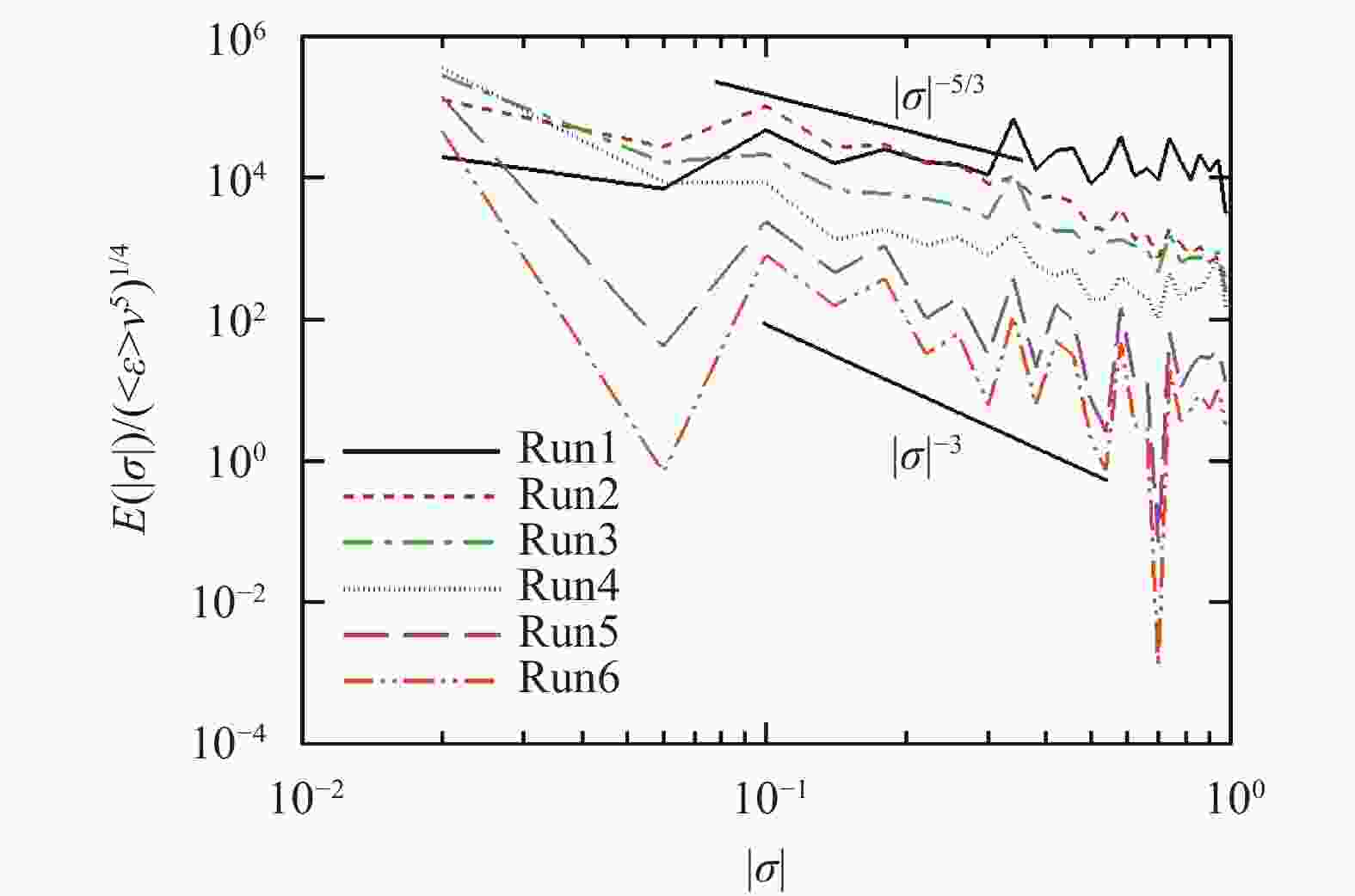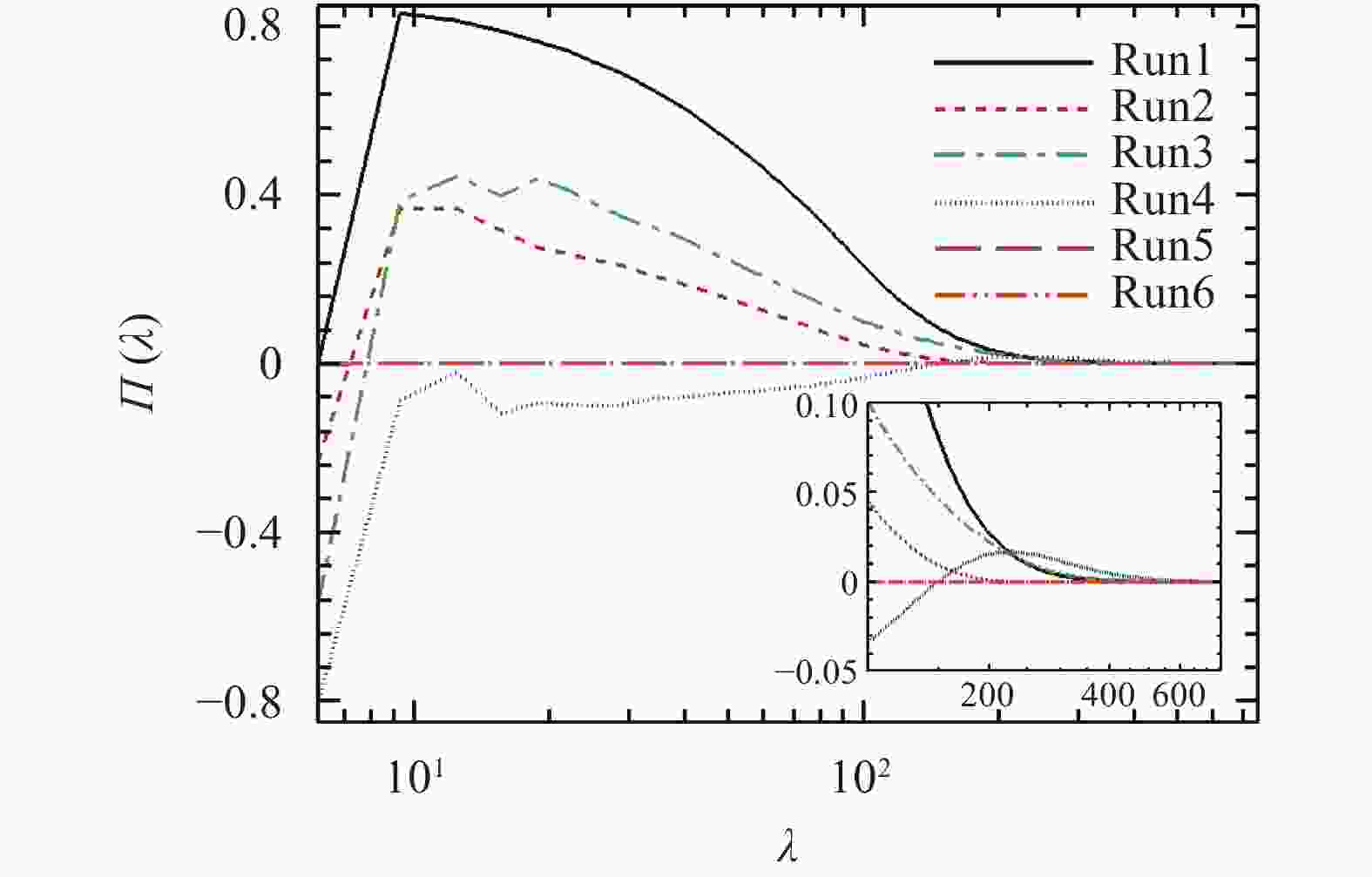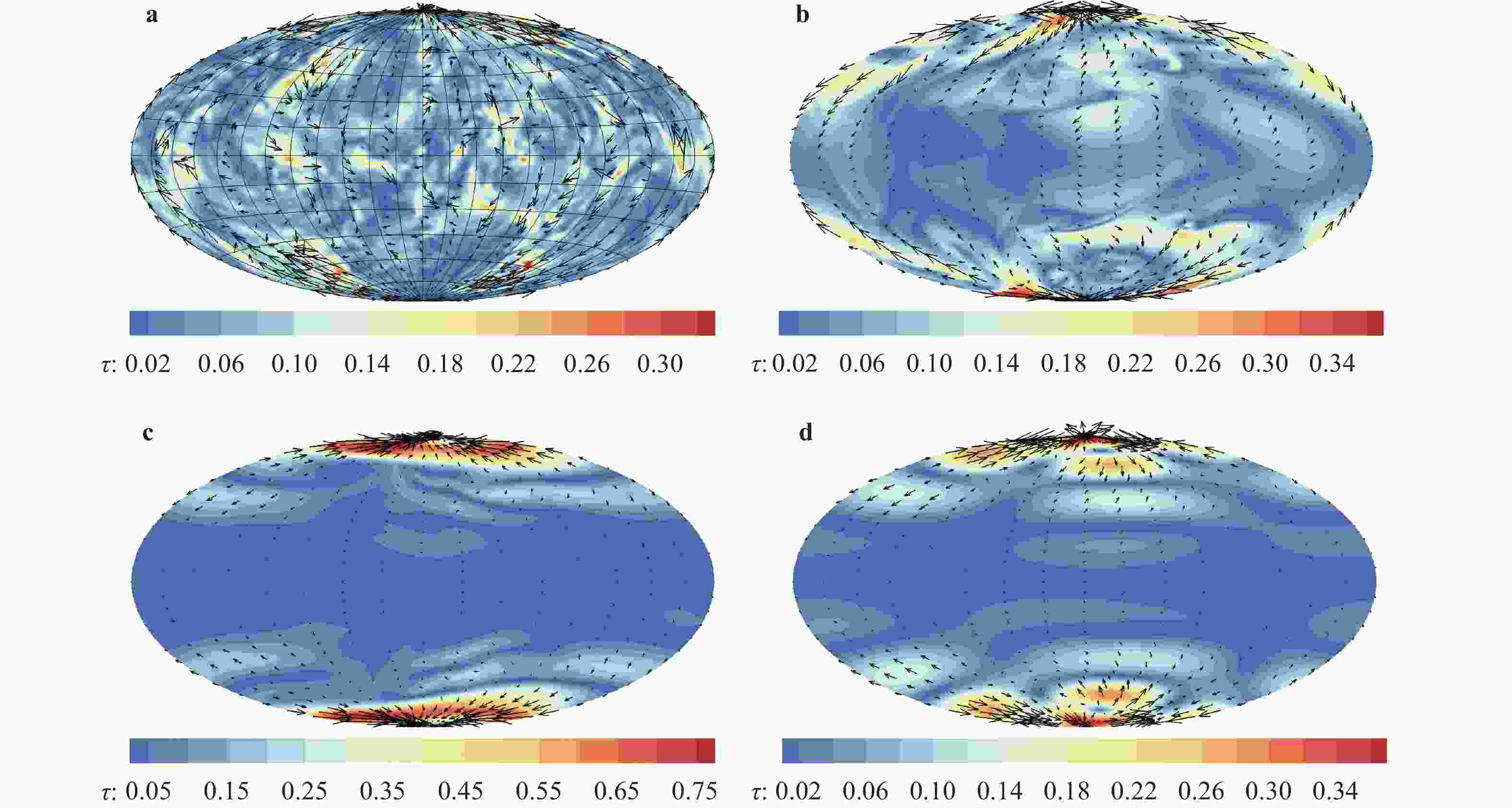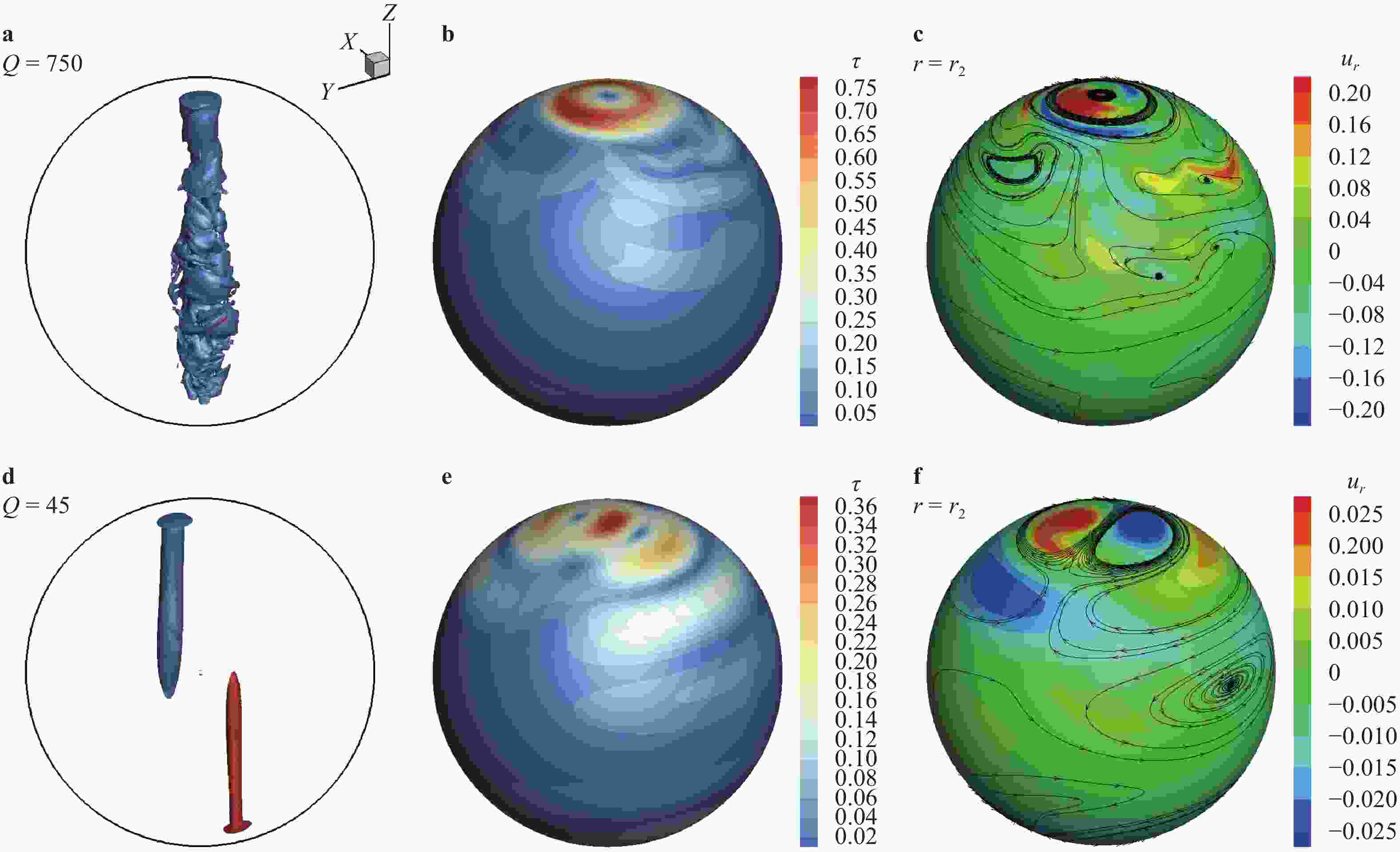Institute of Mechanics,
Chinese Academy of Sciences
2021 Vol.11(6)
Display Mode: |
Theoretical and Applied Mechanics Letters 11 (2021) 100285.
doi: 10.1016/j.taml.2021.100285
Abstract:
Recently proposed clustering-based methods provide an efficient way for homogenizing heterogeneous materials, yet without concerning the detailed distribution of the mechanical responses. With coarse fields of the clustering-based methods as an initial guess, we develop an iteration strategy to fastly and accurately resolve the displacement, strain and stress based on the Lippmann-Schwinger equation, thereby benefiting the local mechanical analysis such as the detection of the stress concentration. From a simple elastic case, we explore the convergence of the method and give an instruction for the selection of the reference material. Numerical tests show the efficiency and fast convergence of the reconstruction method in both elastic and hyper-elastic materials.
Recently proposed clustering-based methods provide an efficient way for homogenizing heterogeneous materials, yet without concerning the detailed distribution of the mechanical responses. With coarse fields of the clustering-based methods as an initial guess, we develop an iteration strategy to fastly and accurately resolve the displacement, strain and stress based on the Lippmann-Schwinger equation, thereby benefiting the local mechanical analysis such as the detection of the stress concentration. From a simple elastic case, we explore the convergence of the method and give an instruction for the selection of the reference material. Numerical tests show the efficiency and fast convergence of the reconstruction method in both elastic and hyper-elastic materials.
Theoretical and Applied Mechanics Letters 11 (2021) 100287.
doi: 10.1016/j.taml.2021.100287
Abstract:
This study analyzes the function of different muscles during arm wrestling and proposes a method to analyze the optimal forearm angle for professional arm wrestlers. We built a professional arm-wrestling platform to measure the shape and deformation of the skin at the biceps brachii of a volunteer in vivo during arm wrestling. We observed the banding phenomenon of arm skin strain during muscle contraction and developed a model to evaluate the moment provided by the biceps brachii. According to this model, the strain field of the area of interest on the skin was measured, and the forearm angles most favorable and unfavorable to the work of the biceps brachii were analyzed. This study demonstrates the considerable potential of applying DIC and its extension method to the in vivo measurement of human skin and facilitates the use of the in vivo measurement of skin deformation in various sports in the future.
This study analyzes the function of different muscles during arm wrestling and proposes a method to analyze the optimal forearm angle for professional arm wrestlers. We built a professional arm-wrestling platform to measure the shape and deformation of the skin at the biceps brachii of a volunteer in vivo during arm wrestling. We observed the banding phenomenon of arm skin strain during muscle contraction and developed a model to evaluate the moment provided by the biceps brachii. According to this model, the strain field of the area of interest on the skin was measured, and the forearm angles most favorable and unfavorable to the work of the biceps brachii were analyzed. This study demonstrates the considerable potential of applying DIC and its extension method to the in vivo measurement of human skin and facilitates the use of the in vivo measurement of skin deformation in various sports in the future.
Theoretical and Applied Mechanics Letters 11 (2021) 100298.
doi: 10.1016/j.taml.2021.100298
Abstract:
Compared with the Hamiltonian mechanics and the Lagrangian mechanics, the Birkhoffian mechanics is more general. The Birkhoffian mechanics is discussed on the basis of the generalized fractional operators, which are proposed recently. Therefore, differential equations of motion within generalized fractional operators are established. Then, in order to find the solutions to the differential equations, Noether symmetry, conserved quantity, perturbation to Noether symmetry and adiabatic invariant are investigated. In the end, two applications are given to illustrate the methods and results.
Compared with the Hamiltonian mechanics and the Lagrangian mechanics, the Birkhoffian mechanics is more general. The Birkhoffian mechanics is discussed on the basis of the generalized fractional operators, which are proposed recently. Therefore, differential equations of motion within generalized fractional operators are established. Then, in order to find the solutions to the differential equations, Noether symmetry, conserved quantity, perturbation to Noether symmetry and adiabatic invariant are investigated. In the end, two applications are given to illustrate the methods and results.
Theoretical and Applied Mechanics Letters 11 (2021) 100299.
doi: 10.1016/j.taml.2021.100299
Abstract:
A significant negative aspect in the operation of bridge-type cranes are the technical problems associated with wear of the wheels and the crane track, which causes crane skewing. The main causes of crane skewing include unevenness of the crane track, unequal loading of the traction drives depending on the position of the crane trolley, slips and different sizes of travel wheels and combinations of these causes. The paper presents a design solution that can be used to detect the magnitude of mechanical stress and deformation of the steel structure of the crane, caused by the effects of skewing. The mechanical stress generated by the transverse forces of the deformed geometric shape of the crane bridge structure is recorded by mechanical stress detectors installed in the inner corners of the crane bridge. The resulting electrical signal from element mechanical voltage detectors, loaded by axial forces, can be used for feedback control of separate crane travel drives controlled by frequency converters. The paper presents the calculation of the lateral transverse forces according to CSN 27 0103 and the determination of the values of mechanical stresses of the deformed steel structure of the crane bridge of a two-girder bridge crane using the finite element method in the program MSC.MARC 2019. The paper presents the structural and strength design of mechanical stress detectors and the conclusions of laboratory tests of axial force loading of mechanical stress detectors on the test equipment. At the same time, it presents records of the measured axial forces acting in the mechanical stress detectors, arising from the deformation and warping of the crane bridge by the known magnitude of the axial force acting on the crossbeam and from the deformation of the crane bridge caused by the crane operating modes.
A significant negative aspect in the operation of bridge-type cranes are the technical problems associated with wear of the wheels and the crane track, which causes crane skewing. The main causes of crane skewing include unevenness of the crane track, unequal loading of the traction drives depending on the position of the crane trolley, slips and different sizes of travel wheels and combinations of these causes. The paper presents a design solution that can be used to detect the magnitude of mechanical stress and deformation of the steel structure of the crane, caused by the effects of skewing. The mechanical stress generated by the transverse forces of the deformed geometric shape of the crane bridge structure is recorded by mechanical stress detectors installed in the inner corners of the crane bridge. The resulting electrical signal from element mechanical voltage detectors, loaded by axial forces, can be used for feedback control of separate crane travel drives controlled by frequency converters. The paper presents the calculation of the lateral transverse forces according to CSN 27 0103 and the determination of the values of mechanical stresses of the deformed steel structure of the crane bridge of a two-girder bridge crane using the finite element method in the program MSC.MARC 2019. The paper presents the structural and strength design of mechanical stress detectors and the conclusions of laboratory tests of axial force loading of mechanical stress detectors on the test equipment. At the same time, it presents records of the measured axial forces acting in the mechanical stress detectors, arising from the deformation and warping of the crane bridge by the known magnitude of the axial force acting on the crossbeam and from the deformation of the crane bridge caused by the crane operating modes.
Theoretical and Applied Mechanics Letters 11 (2021) 100300.
doi: 10.1016/j.taml.2021.100300
Abstract:
This paper experimentally studied the features of air-water flow during the emptying of a water-filled prismatic tank with a bottom orifice under different conditions. The experiments were conducted with both circular and elliptical orifices, with and without ventilation. The evolution of bubbles, water pressure variation, and water level change with time were recorded in the experiments and analyzed. Based on the results, the evolution of bubbles could be mainly divided into three stages of formation, deformation, and decomposition. Ventilation was found important to the emptying process, with which the drainage efficiency was much higher than that under the unventilated condition. Additionally, under the unventilated condition, the drainage efficiency with the circular orifice was slightly higher than that with the elliptical orifice.
This paper experimentally studied the features of air-water flow during the emptying of a water-filled prismatic tank with a bottom orifice under different conditions. The experiments were conducted with both circular and elliptical orifices, with and without ventilation. The evolution of bubbles, water pressure variation, and water level change with time were recorded in the experiments and analyzed. Based on the results, the evolution of bubbles could be mainly divided into three stages of formation, deformation, and decomposition. Ventilation was found important to the emptying process, with which the drainage efficiency was much higher than that under the unventilated condition. Additionally, under the unventilated condition, the drainage efficiency with the circular orifice was slightly higher than that with the elliptical orifice.
Theoretical and Applied Mechanics Letters 11 (2021) 100305.
doi: 10.1016/j.taml.2021.100305
Abstract:
The actuator disc method is an engineering approach to reduce computer resources in Computational Fluid Dynamics (CFD) simulations of helicopter rotors or aeroplane propellers. Implementation of an actuator disc based on rotor circulation distribution allows for approximations to be made while reproducing the blade tip vortices. Radial circulation distributions can be formulated according to the nonuniform Heyson-Katzoff “typical load” in hover. In forward flight, the nonuniform disk models include “azimuthal” sin and cos terms to reproduce the blade cyclic motion. The azimuthal circulation distribution for a forward flight mode corresponds to trimmed conditions for the disk rolling and pitching moments. The amplitude of the cos harmonic is analysed and compared here with presented in references data and CFD simulations results.
The actuator disc method is an engineering approach to reduce computer resources in Computational Fluid Dynamics (CFD) simulations of helicopter rotors or aeroplane propellers. Implementation of an actuator disc based on rotor circulation distribution allows for approximations to be made while reproducing the blade tip vortices. Radial circulation distributions can be formulated according to the nonuniform Heyson-Katzoff “typical load” in hover. In forward flight, the nonuniform disk models include “azimuthal” sin and cos terms to reproduce the blade cyclic motion. The azimuthal circulation distribution for a forward flight mode corresponds to trimmed conditions for the disk rolling and pitching moments. The amplitude of the cos harmonic is analysed and compared here with presented in references data and CFD simulations results.
Theoretical and Applied Mechanics Letters 11 (2021) 100308.
doi: 10.1016/j.taml.2021.100308
Abstract:
Transfer printing based on switchable adhesive is essential for developing unconventional systems, including flexible electronics, stretchable electronics, and micro light-emitting diode (LED) displays. Here we report a design of switchable dry adhesive based on shape memory polymer (SMP) with hemispherical indenters, which offers a continuously tunable and reversible adhesion through the combination of the preloading effect and the thermal actuation of SMP. Experimental and numerical studies reveal the fundamental aspects of design, fabrication, and operation of the switchable dry adhesive. Demonstrations of this adhesive concept in transfer printing of flat objects (e.g., silicon wafers), three-dimensional (3D) objects (e.g., stainless steel balls), and rough objects (e.g., frosted glasses) in two-dimensional (2D) or 3D layouts illustrate its unusual manipulation capabilities in heterogeneous material integration applications.
Transfer printing based on switchable adhesive is essential for developing unconventional systems, including flexible electronics, stretchable electronics, and micro light-emitting diode (LED) displays. Here we report a design of switchable dry adhesive based on shape memory polymer (SMP) with hemispherical indenters, which offers a continuously tunable and reversible adhesion through the combination of the preloading effect and the thermal actuation of SMP. Experimental and numerical studies reveal the fundamental aspects of design, fabrication, and operation of the switchable dry adhesive. Demonstrations of this adhesive concept in transfer printing of flat objects (e.g., silicon wafers), three-dimensional (3D) objects (e.g., stainless steel balls), and rough objects (e.g., frosted glasses) in two-dimensional (2D) or 3D layouts illustrate its unusual manipulation capabilities in heterogeneous material integration applications.
Theoretical and Applied Mechanics Letters 11 (2021) 100309.
doi: 10.1016/j.taml.2021.100309
Abstract:
The present study provides a three-dimensional volume-of-fluid method based on the adaptive mesh refinement technique. The projection method on the adaptive mesh is introduced for solving the incompressible Navier-Stokes equations. The octree structure mesh is employed to solve the flow velocities and the pressure. The developed solver is applied to simulate the deformation of the cubic droplet driven by the surface tension without the effect of the gravity. The numerical results well predict the shape evolution of the droplet.
The present study provides a three-dimensional volume-of-fluid method based on the adaptive mesh refinement technique. The projection method on the adaptive mesh is introduced for solving the incompressible Navier-Stokes equations. The octree structure mesh is employed to solve the flow velocities and the pressure. The developed solver is applied to simulate the deformation of the cubic droplet driven by the surface tension without the effect of the gravity. The numerical results well predict the shape evolution of the droplet.
Theoretical and Applied Mechanics Letters 11 (2021) 100310.
doi: 10.1016/j.taml.2021.100310
Abstract:
Metals have been mankind’s most essential materials for thousands of years. In recent years, however, innovation-driven development of major national security strategy and core areas of the national economy is highly impeded by a shortage of advanced higher-strength-toughness metals. One of the main reasons is that metals inherently exhibit the inverted-relationship of strength-toughness. The emergence of two types of disordered metals: amorphous alloys and high entropy alloys, provides a fully-fresh strategy for strength-toughening by tailoring the topological and/or chemical disorder. In this paper, we first briefly review the history of strength-toughening of metals, and summarize the development route-map. We then introduce amorphous alloys and high entropy alloys, as well as some case studies in tailoring disorder to successfully achieve coexisting high strength and high ductility/toughness. Relevant challenges that await further research are summarized in concluding remarks.
Metals have been mankind’s most essential materials for thousands of years. In recent years, however, innovation-driven development of major national security strategy and core areas of the national economy is highly impeded by a shortage of advanced higher-strength-toughness metals. One of the main reasons is that metals inherently exhibit the inverted-relationship of strength-toughness. The emergence of two types of disordered metals: amorphous alloys and high entropy alloys, provides a fully-fresh strategy for strength-toughening by tailoring the topological and/or chemical disorder. In this paper, we first briefly review the history of strength-toughening of metals, and summarize the development route-map. We then introduce amorphous alloys and high entropy alloys, as well as some case studies in tailoring disorder to successfully achieve coexisting high strength and high ductility/toughness. Relevant challenges that await further research are summarized in concluding remarks.
Theoretical and Applied Mechanics Letters 11 (2021) 100311.
doi: 10.1016/j.taml.2021.100311
Abstract:
The coupling effect between a pulsating bubble and a free surface near a rigid structure is a complicated physical process. In this study, the evolution of an underwater explosion bubble and the free surface near a rigid structure is modelled by the boundary integral method. An approach of 'double-node method' is used to maintain the stability of fluid-structure junction in the simulations, and meshes on the free surface and the structure are transformed to an open domain to ensure the calculation accuracy and efficiency. Validations are conducted against an underwater explosion experiment near a rigid structure. As a result, the simulations trace the jetting behaviour of the bubble and the rise of the free surface. Finally, the bubble migration and the height of the free surface for different structure draughts are analyzed.
The coupling effect between a pulsating bubble and a free surface near a rigid structure is a complicated physical process. In this study, the evolution of an underwater explosion bubble and the free surface near a rigid structure is modelled by the boundary integral method. An approach of 'double-node method' is used to maintain the stability of fluid-structure junction in the simulations, and meshes on the free surface and the structure are transformed to an open domain to ensure the calculation accuracy and efficiency. Validations are conducted against an underwater explosion experiment near a rigid structure. As a result, the simulations trace the jetting behaviour of the bubble and the rise of the free surface. Finally, the bubble migration and the height of the free surface for different structure draughts are analyzed.
Theoretical and Applied Mechanics Letters 11 (2021) 100312.
doi: 10.1016/j.taml.2021.100312
Abstract:
We investigate flow structures, nonlinear inertial waves and energy transfer in a rotating fluid sphere, using a Galerkin spectral method based on helical-wave decomposition (HWD). Numerical simulations of flows in a sphere are performed with different system rotation rates, where a large-scale forcing is employed. For the case without system rotation, the intense vortex structures are tube-like. When a weak rotation is introduced, small-scale structures are reduced and vortex tubes tend to align with the rotation axis. As the rotation rate increases, a large-scale anticyclonic vortex structure is formed near the rotation axis. The structure is shown to be led by certain geostrophic modes. When the rotation rate further increases, a cyclone and an anticyclone emerge from the top and bottom of the boundary, respectively, where two quasi-geostrophic equatorially symmetric inertial waves dominate the flow. Based on HWD, effects of spherical confinement on rotating turbulence are systematically studied. It is found that the forward cascade becomes weaker as the rotation increases. When the rotation rate becomes larger than some critical value, dual energy cascades emerge, with an inverse cascade at large scales and a forward cascade at small scales. Finally, the flow behavior near the boundary is studied, where the average boundary layer thickness gets smaller when system rotation increases. The flow behavior in the boundary layer is closely related to the interior flow structures, which create significant mass flux between the boundary layer and the interior fluid through Ekman pumping.
We investigate flow structures, nonlinear inertial waves and energy transfer in a rotating fluid sphere, using a Galerkin spectral method based on helical-wave decomposition (HWD). Numerical simulations of flows in a sphere are performed with different system rotation rates, where a large-scale forcing is employed. For the case without system rotation, the intense vortex structures are tube-like. When a weak rotation is introduced, small-scale structures are reduced and vortex tubes tend to align with the rotation axis. As the rotation rate increases, a large-scale anticyclonic vortex structure is formed near the rotation axis. The structure is shown to be led by certain geostrophic modes. When the rotation rate further increases, a cyclone and an anticyclone emerge from the top and bottom of the boundary, respectively, where two quasi-geostrophic equatorially symmetric inertial waves dominate the flow. Based on HWD, effects of spherical confinement on rotating turbulence are systematically studied. It is found that the forward cascade becomes weaker as the rotation increases. When the rotation rate becomes larger than some critical value, dual energy cascades emerge, with an inverse cascade at large scales and a forward cascade at small scales. Finally, the flow behavior near the boundary is studied, where the average boundary layer thickness gets smaller when system rotation increases. The flow behavior in the boundary layer is closely related to the interior flow structures, which create significant mass flux between the boundary layer and the interior fluid through Ekman pumping.
 Submit a Paper
Submit a Paper
 Subscription
Subscription
News
MORE+
Call for Papers
MORE+
- Crossing-Mechanics Driven by Big Data
- Machine learning in the fluid mechanics research of wind energy
- Mechanics of Origami/Kirigami structures and metamaterials
- New insights and perspectives on impact biomechanics for human tissues: from injury prevention, protection to protective equipment
- Environmental Mechanics for Extreme Natural Events



